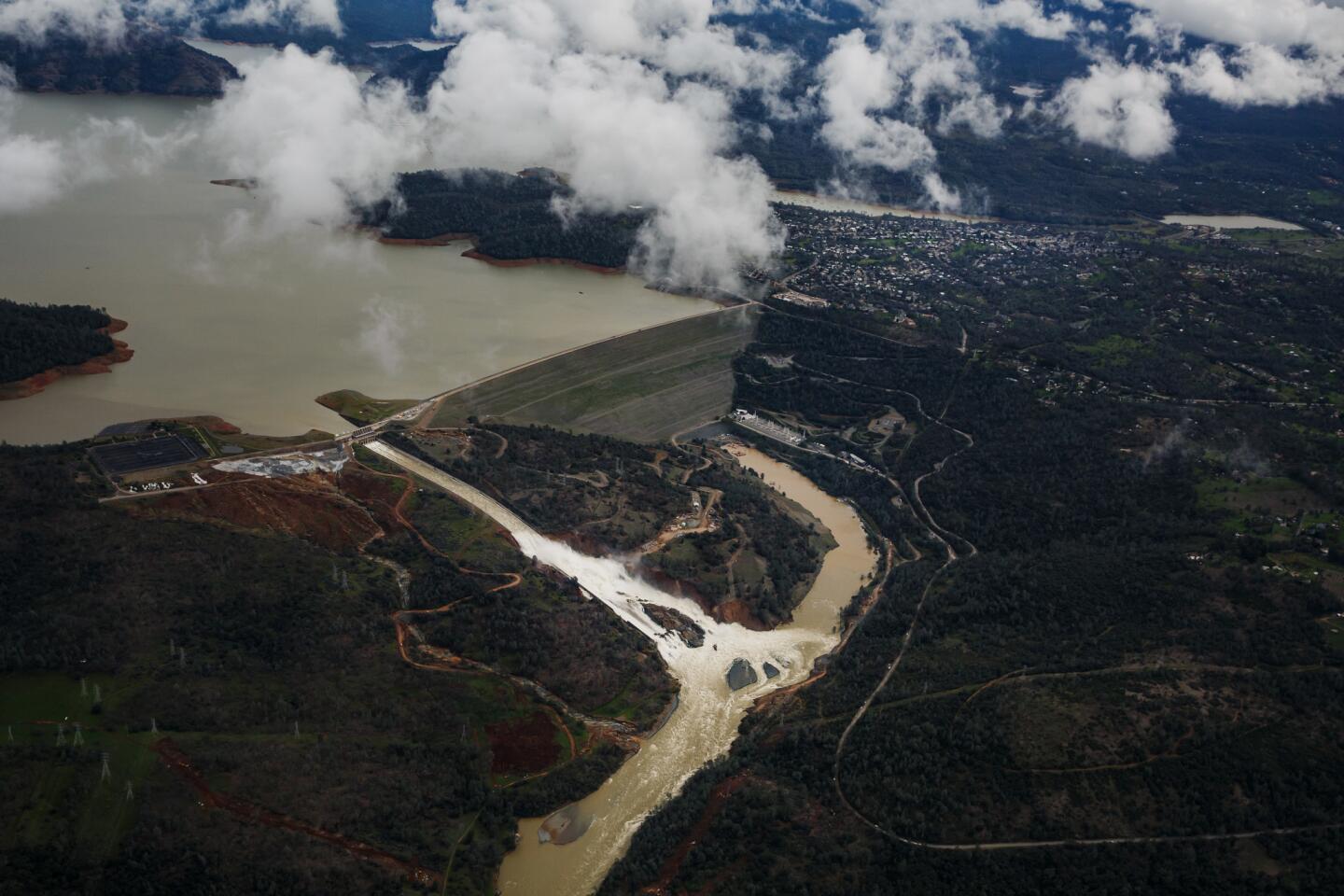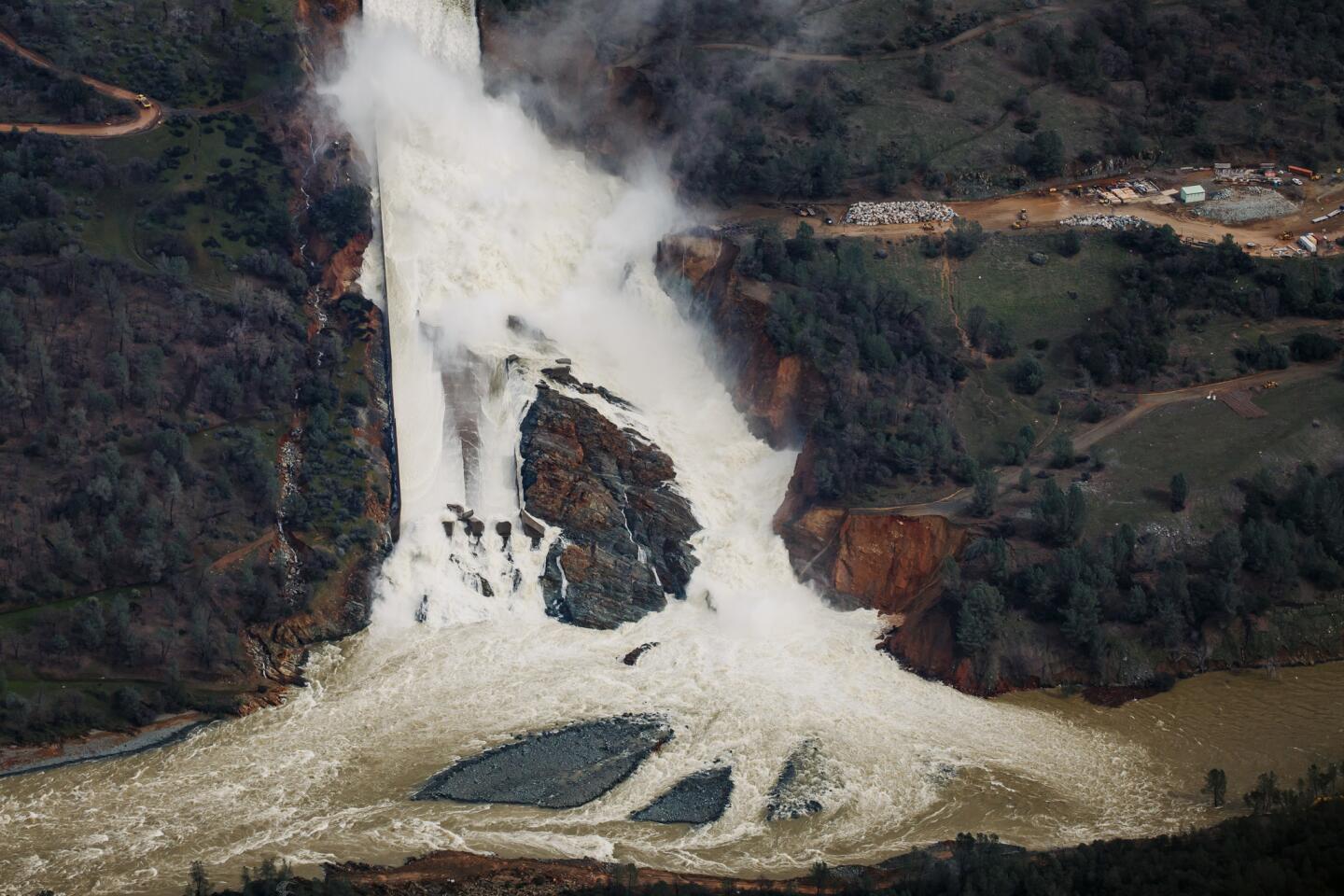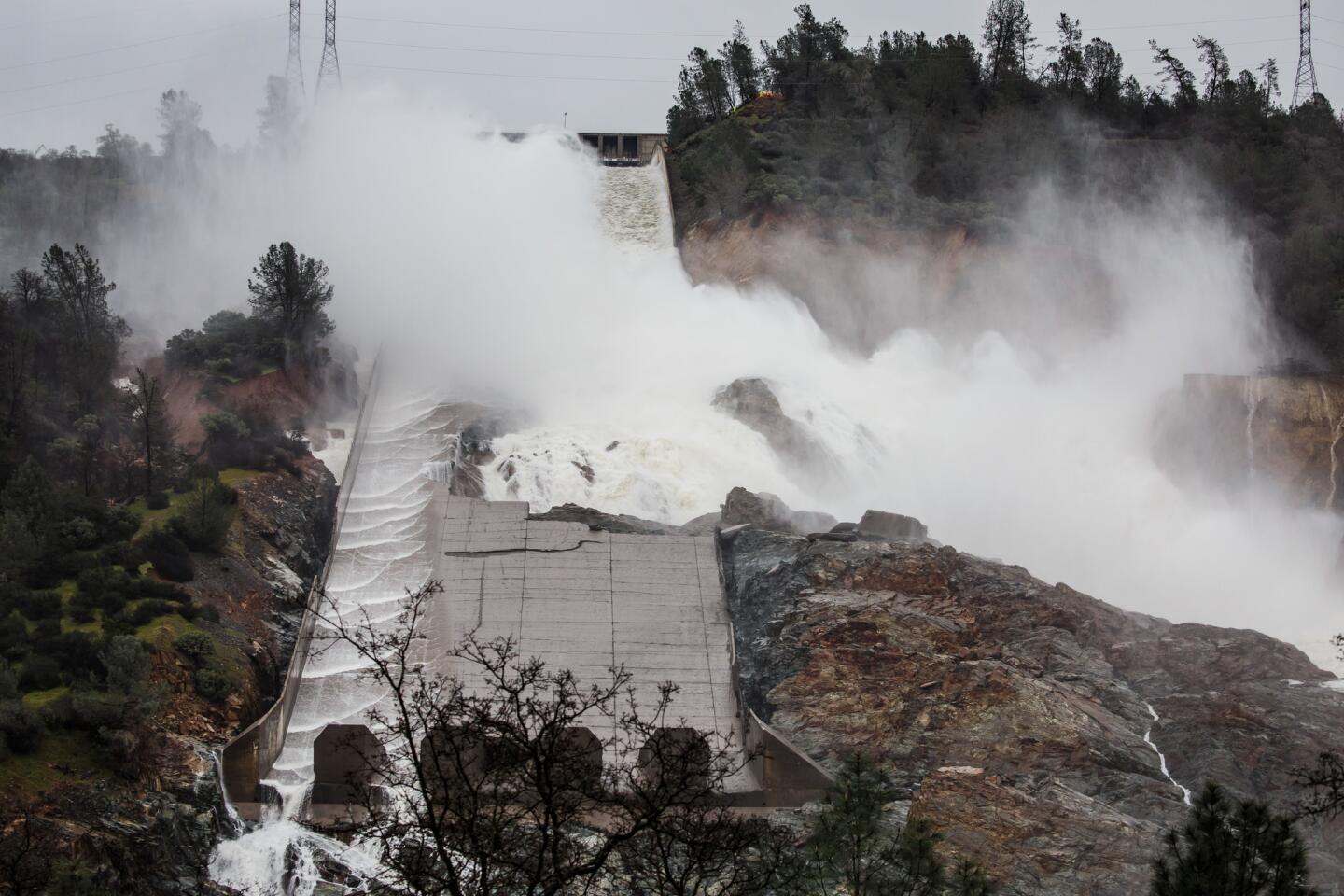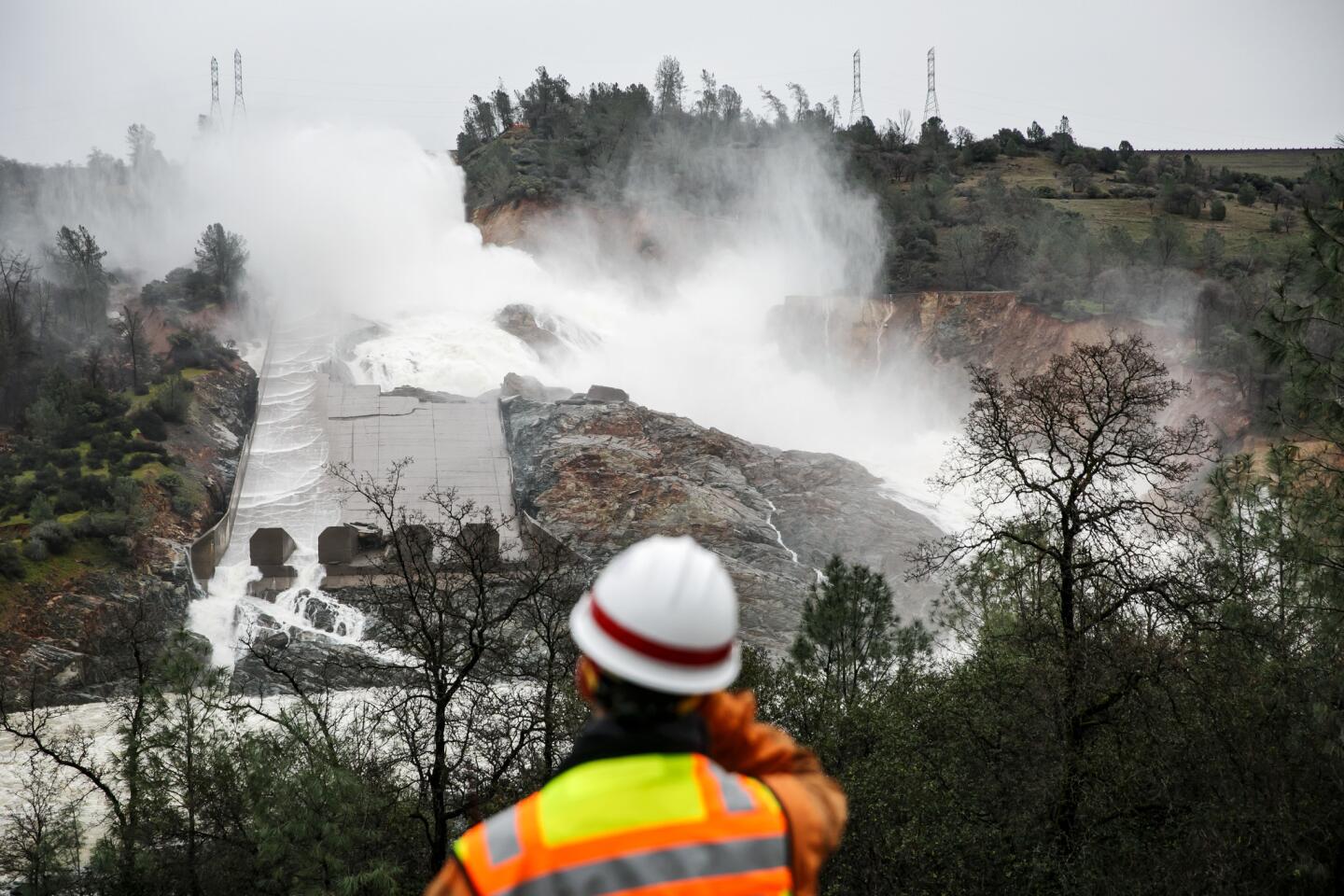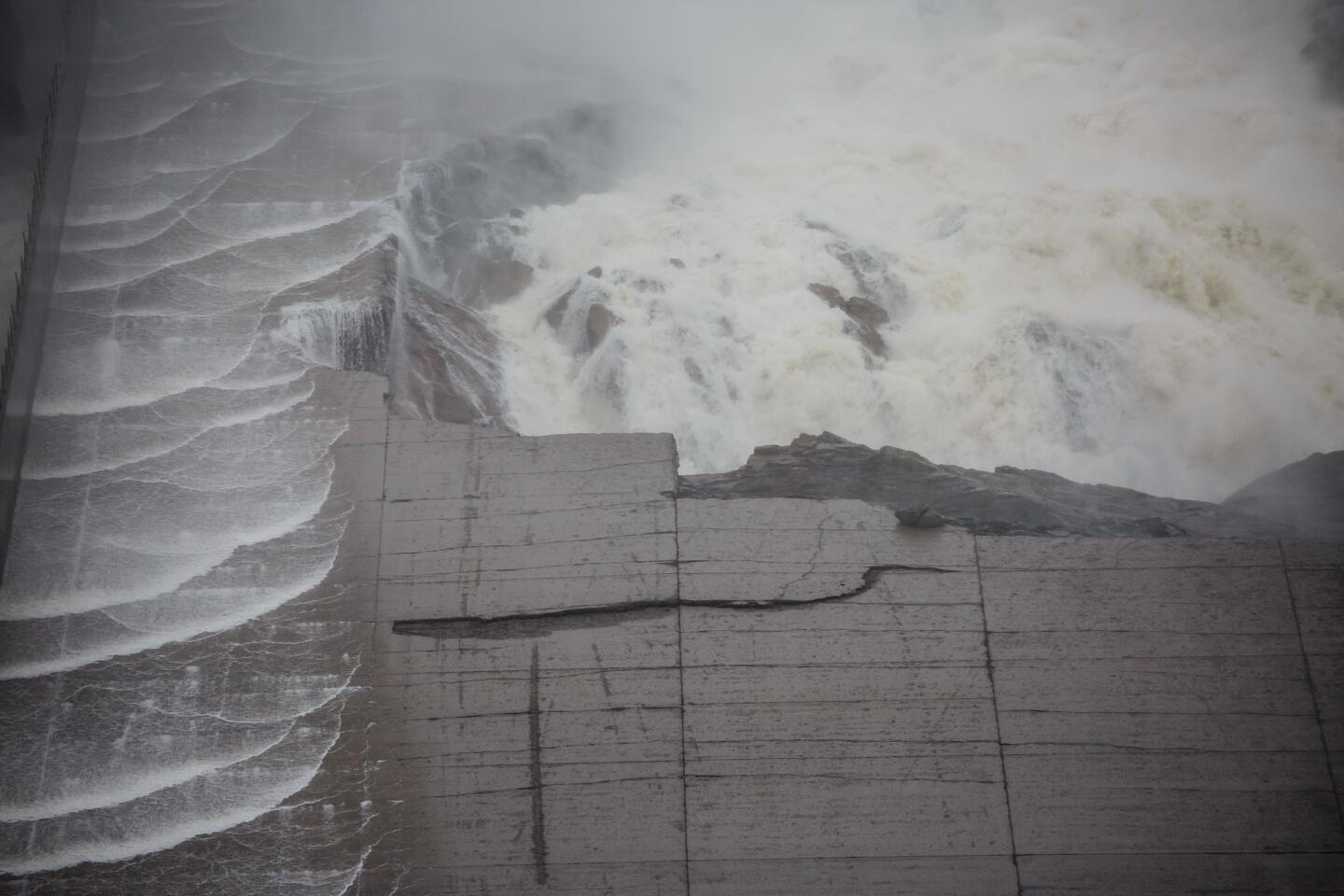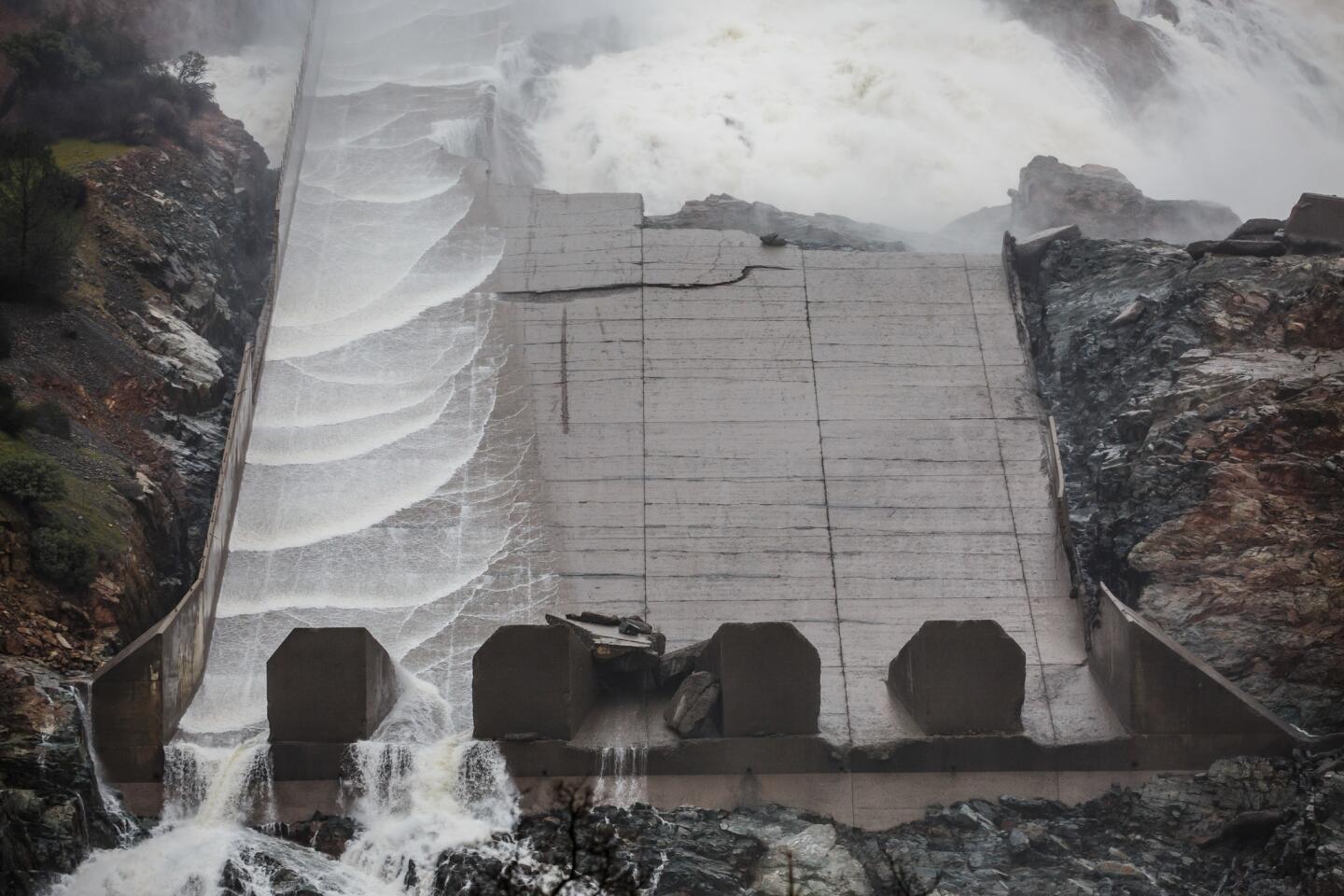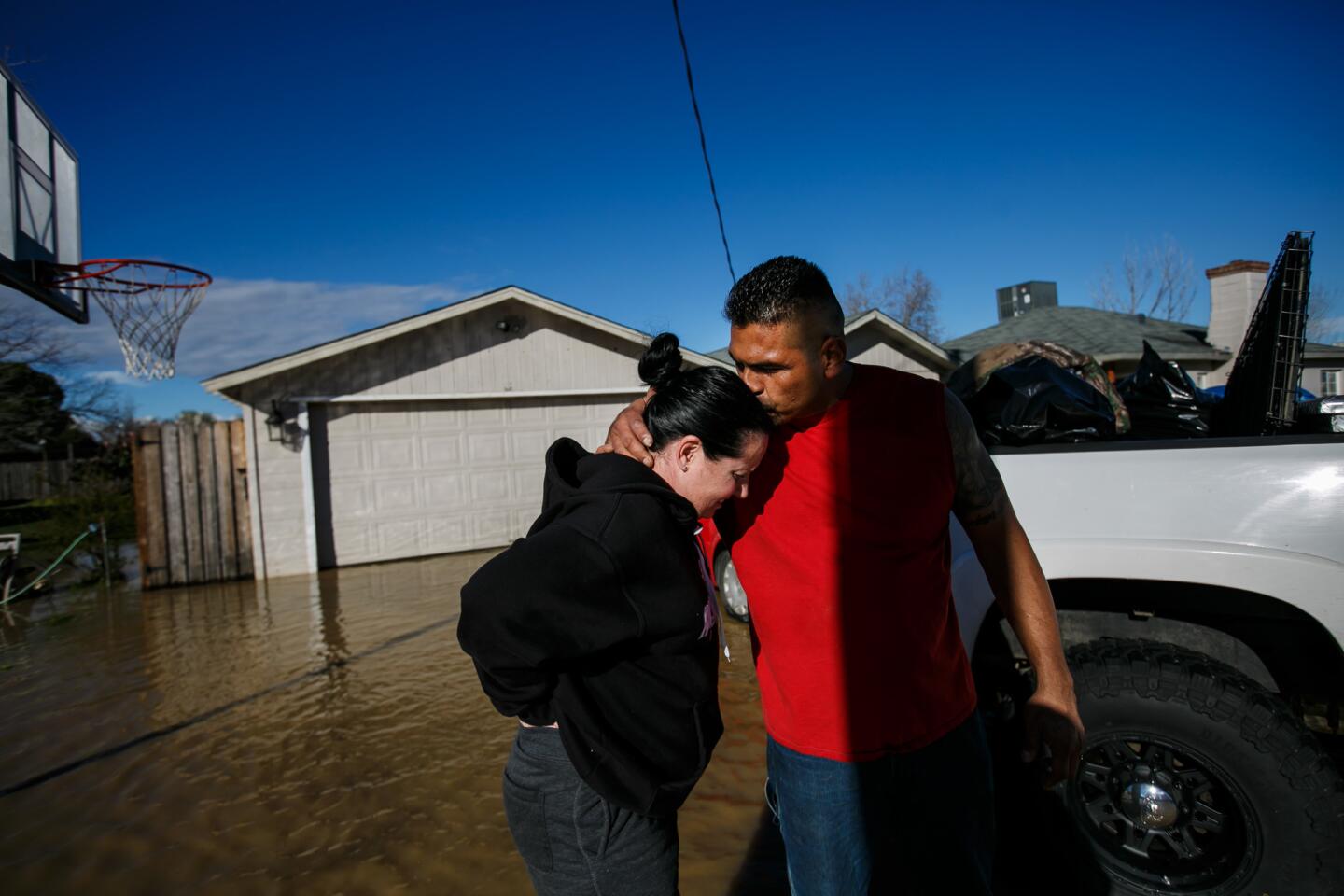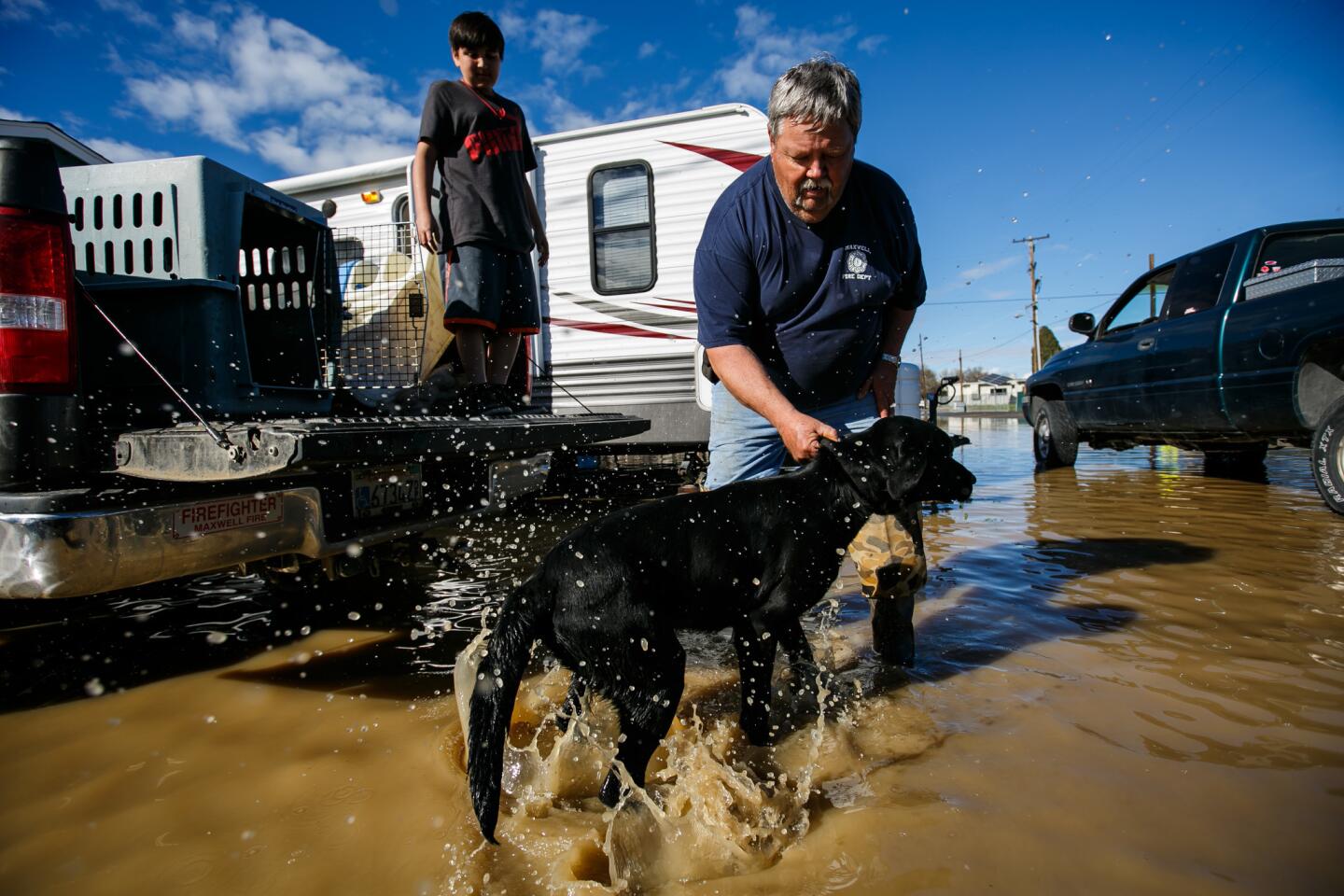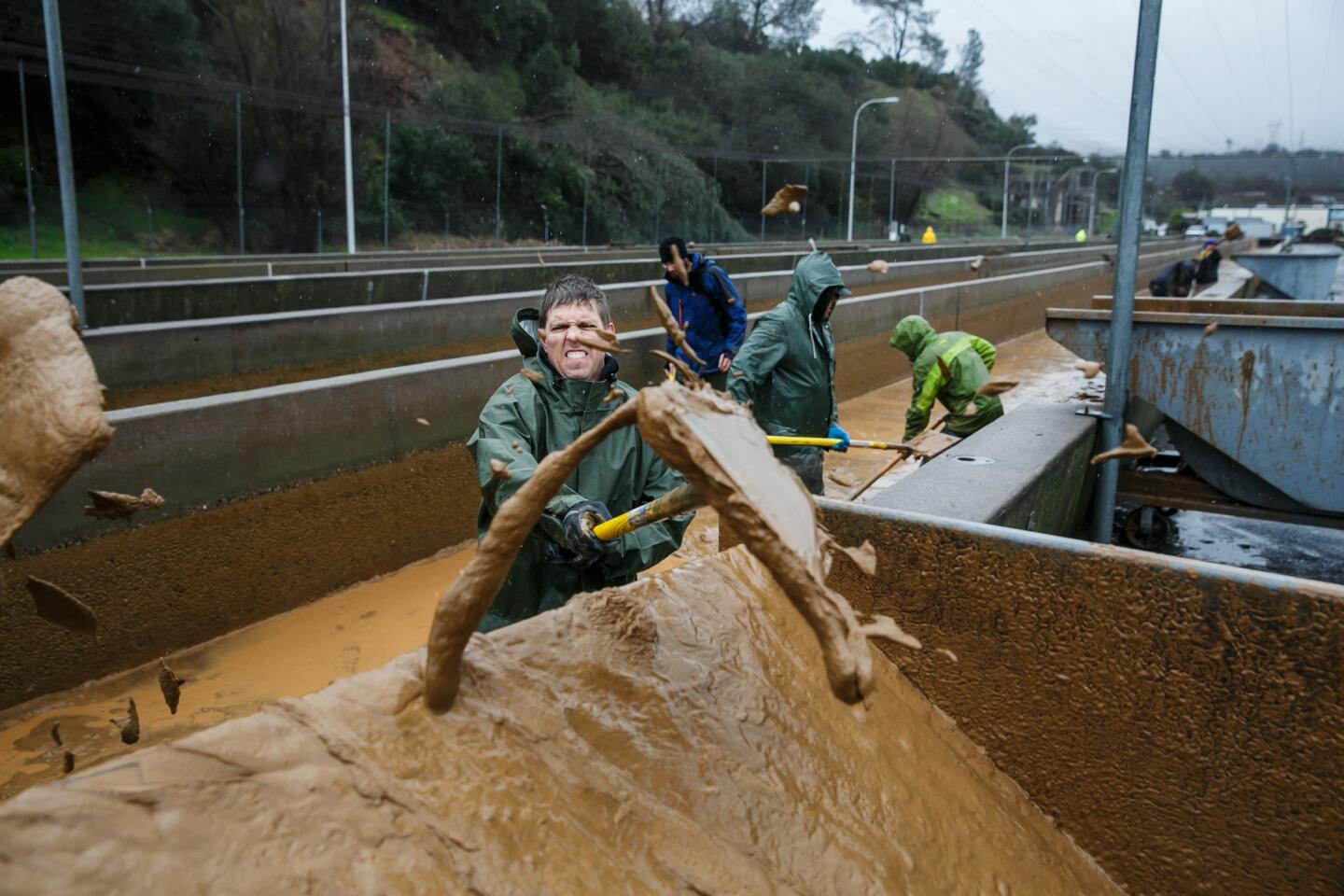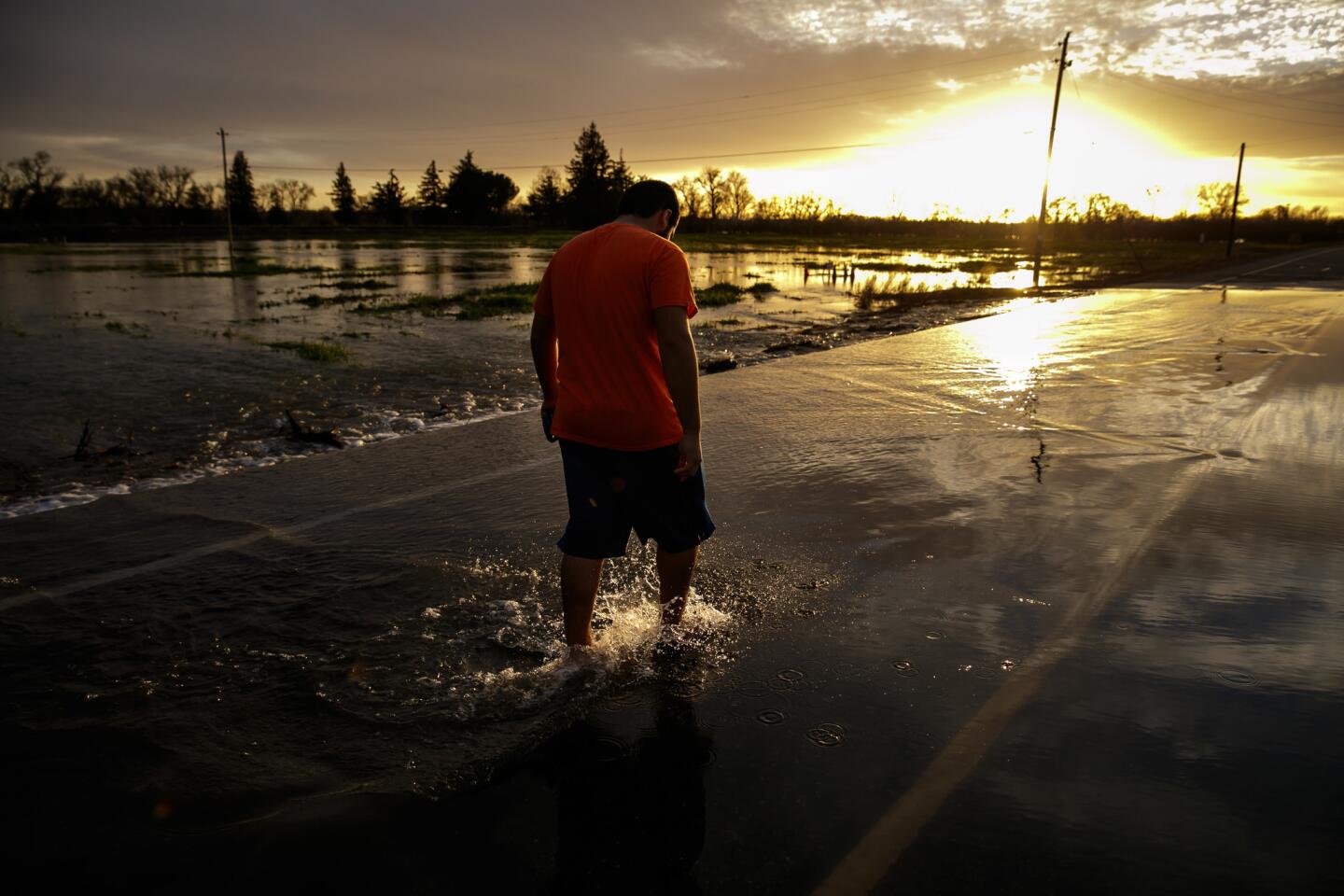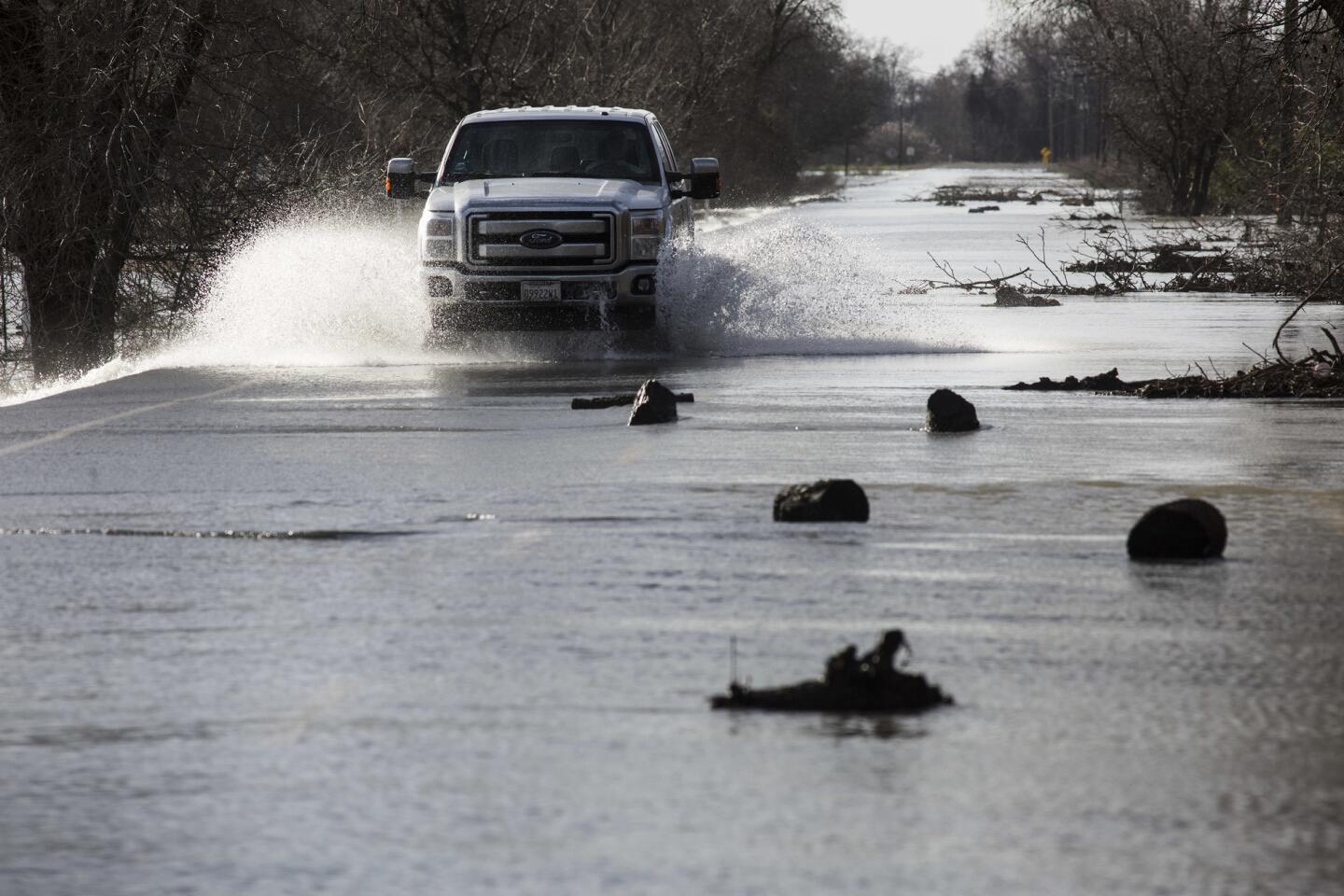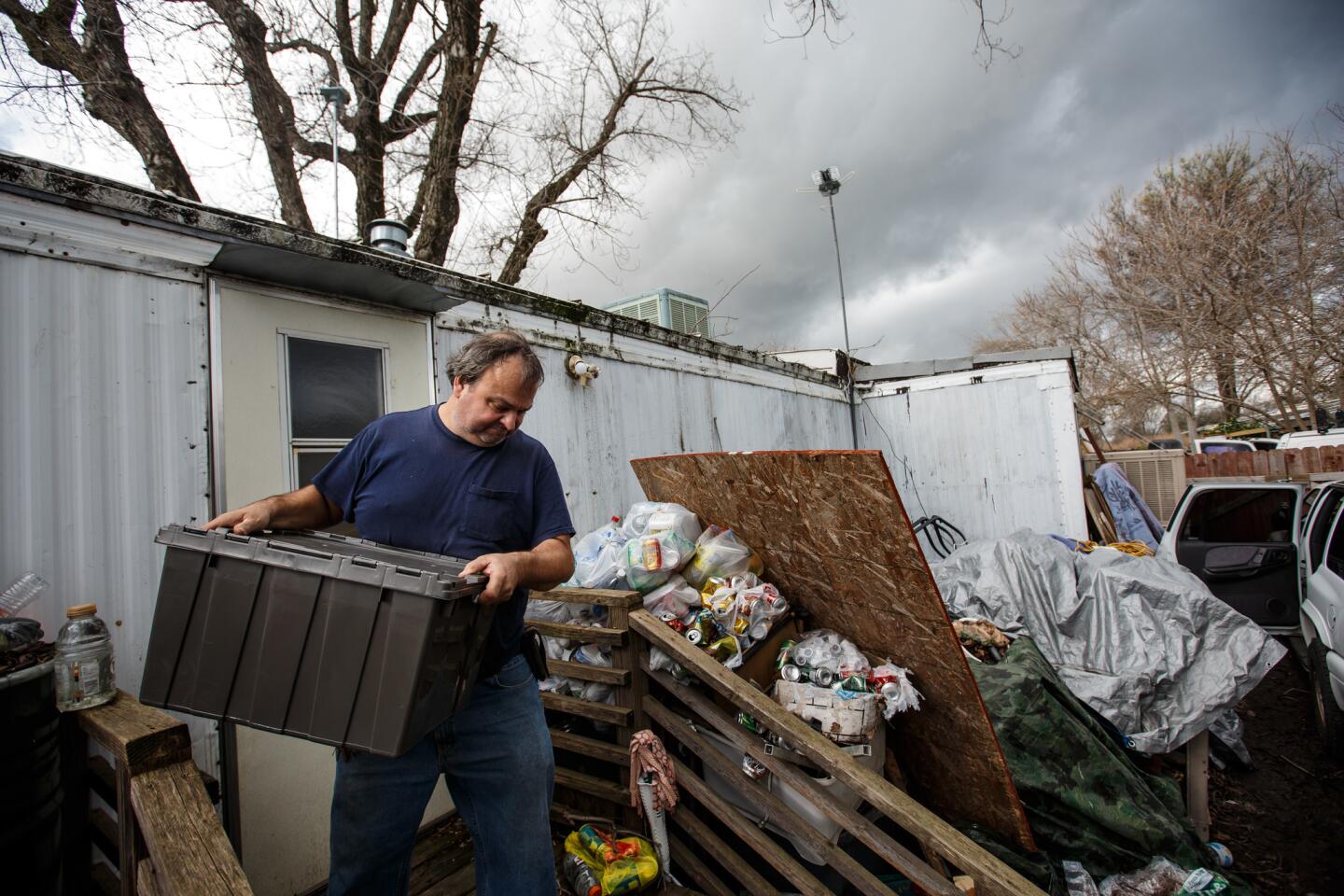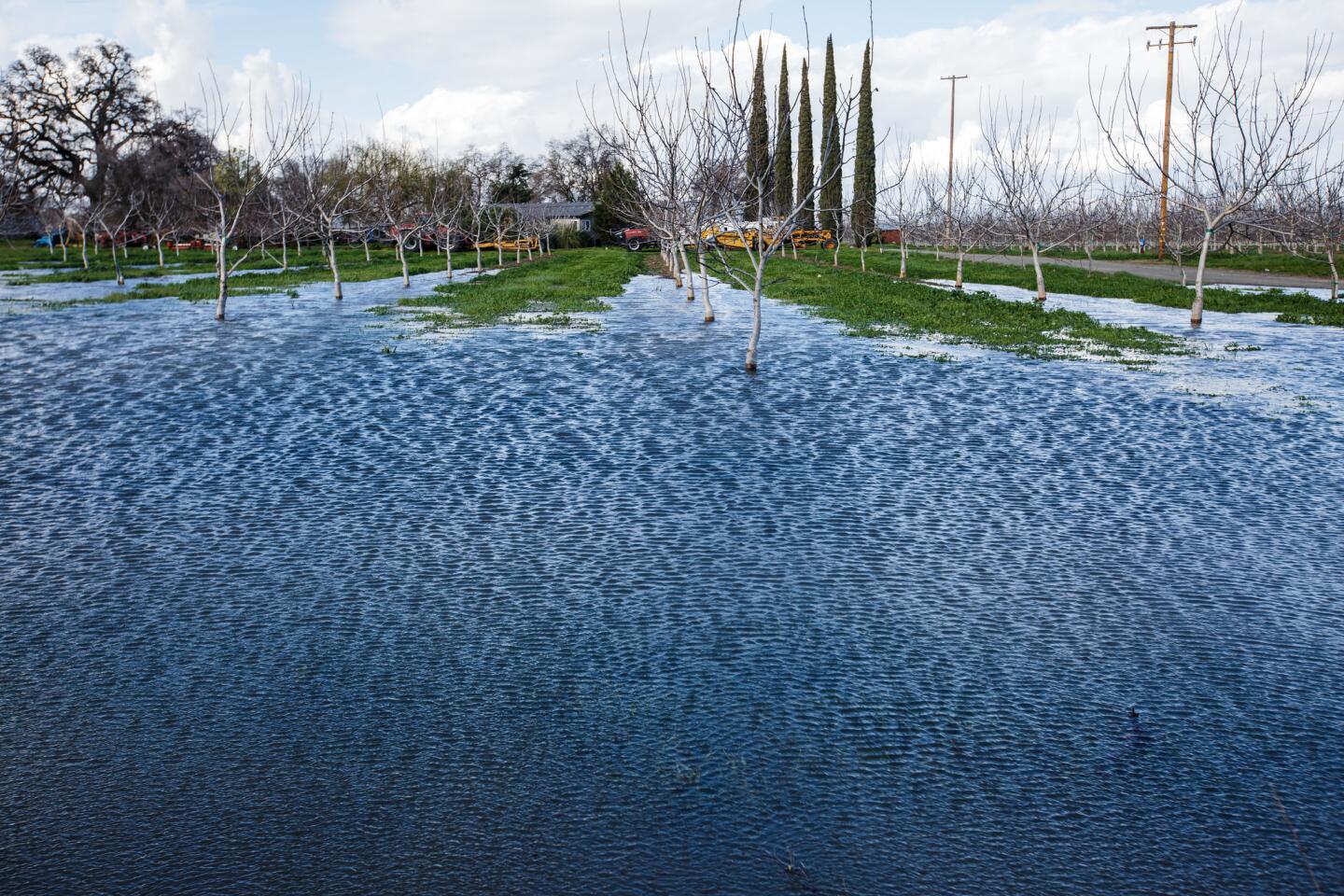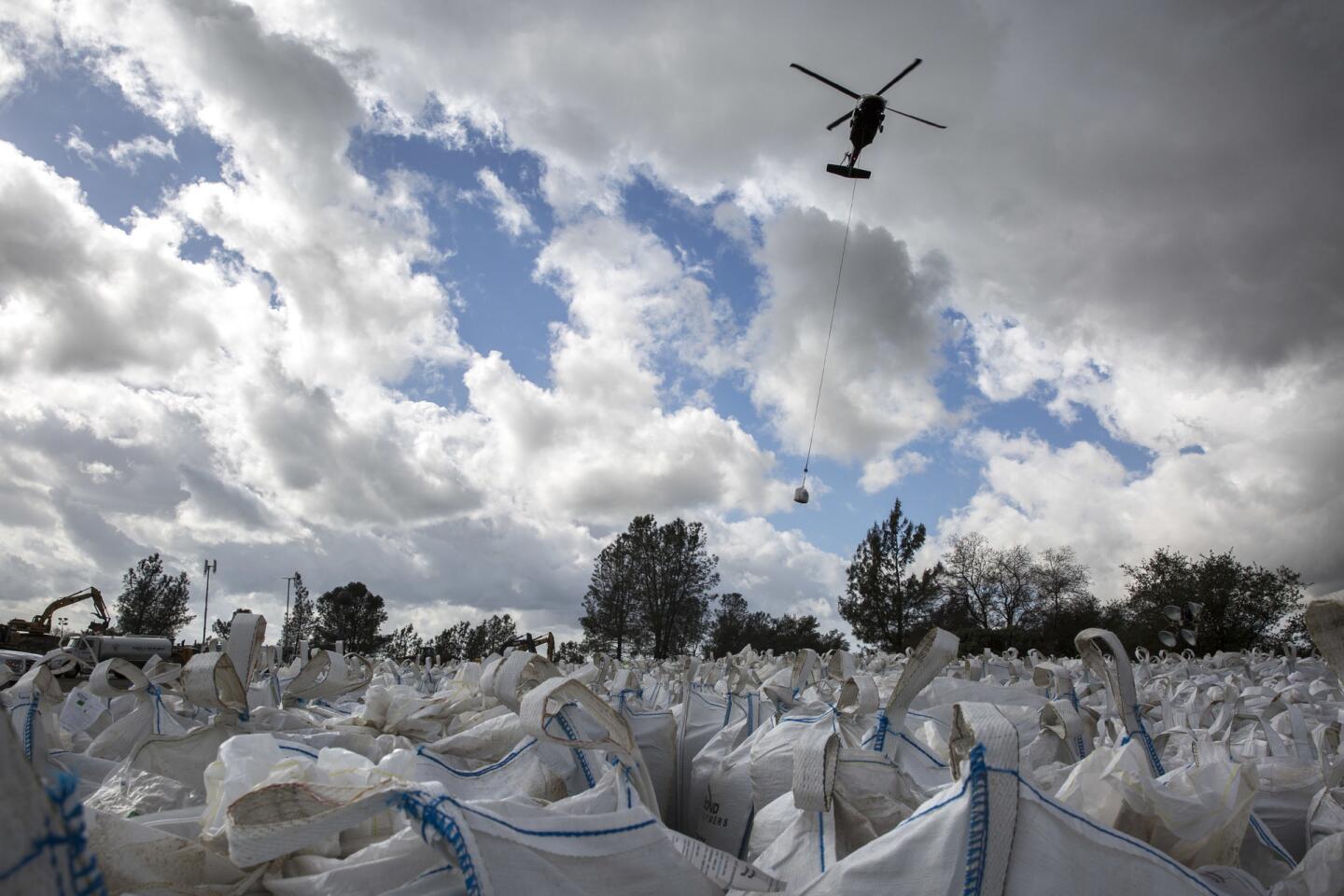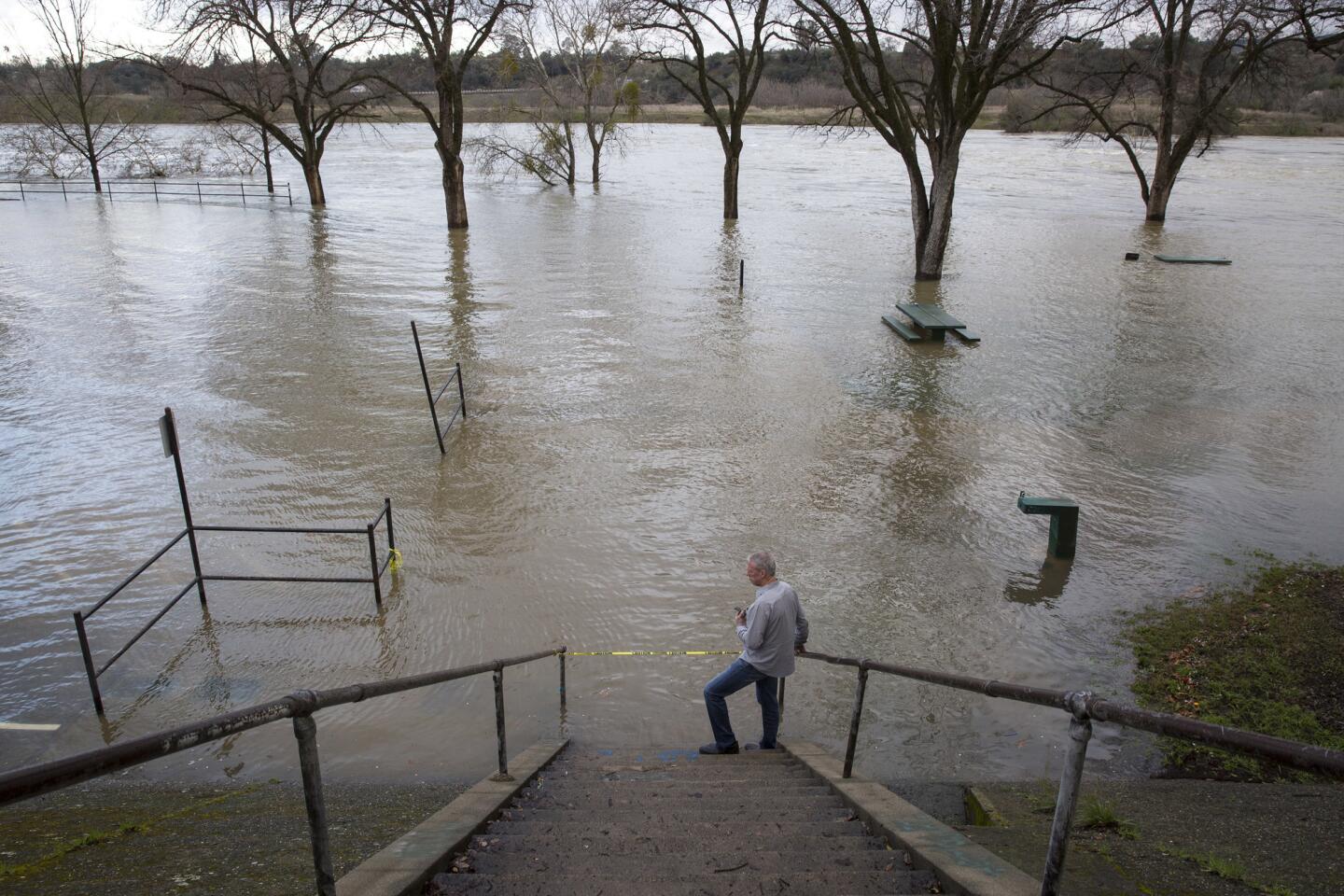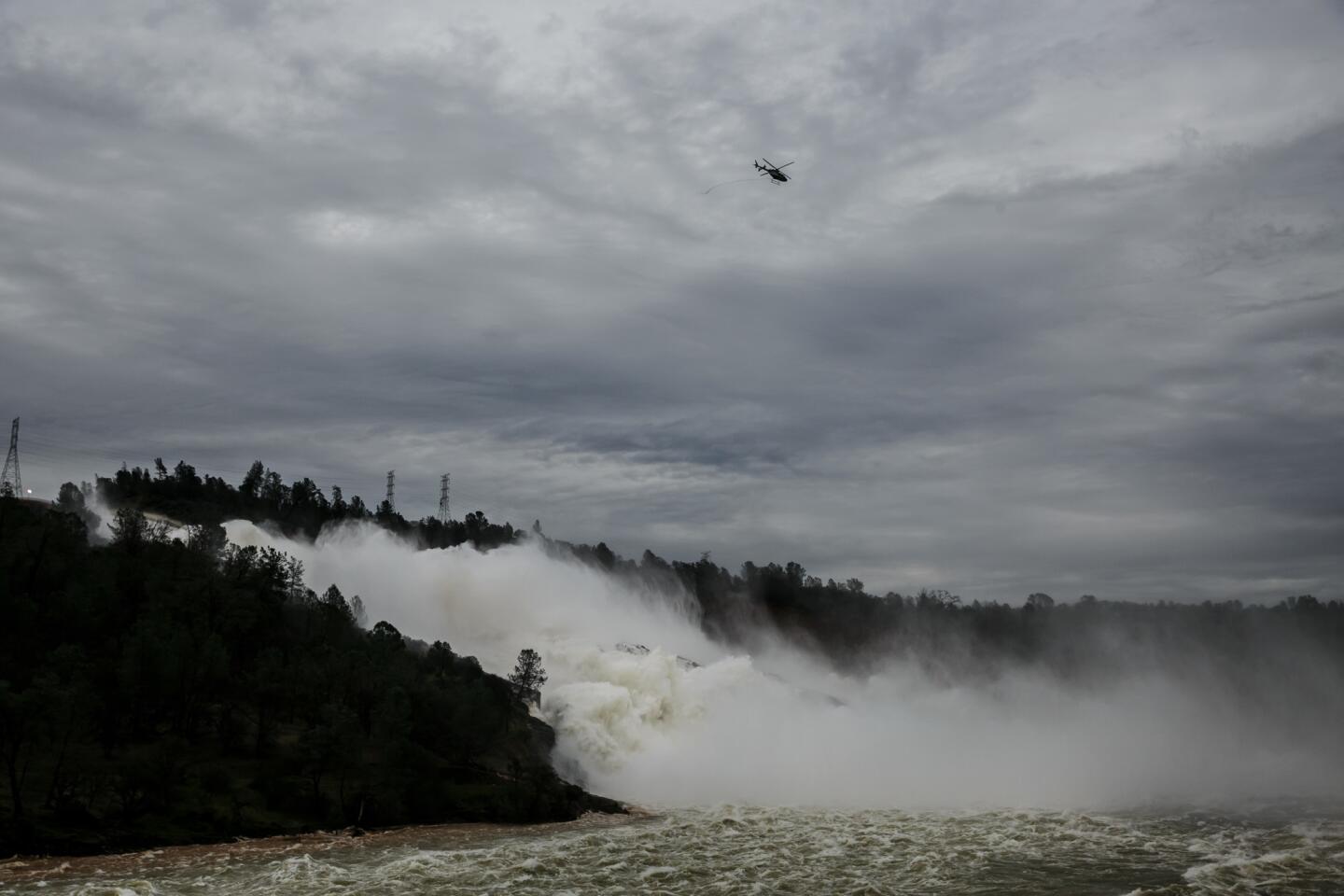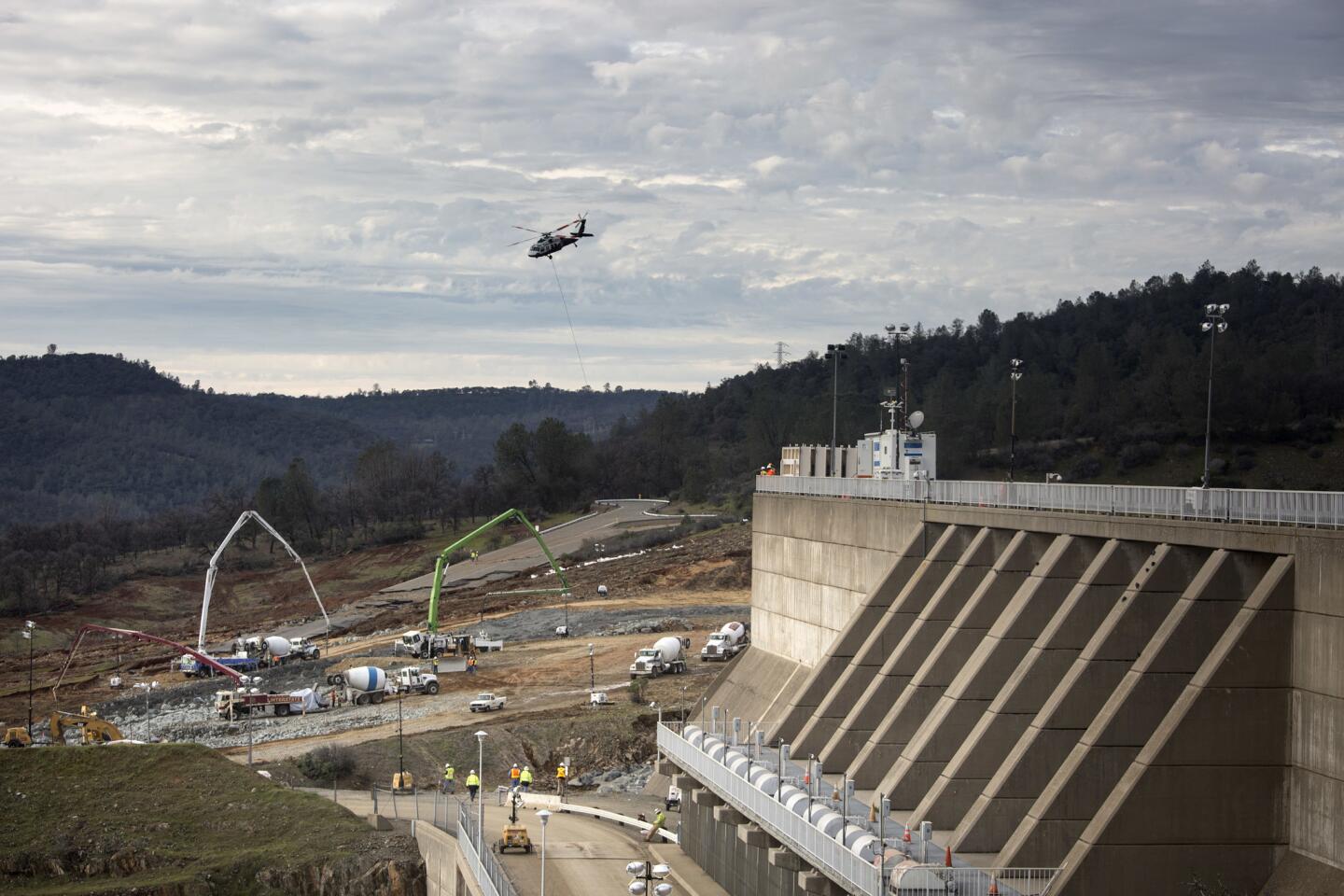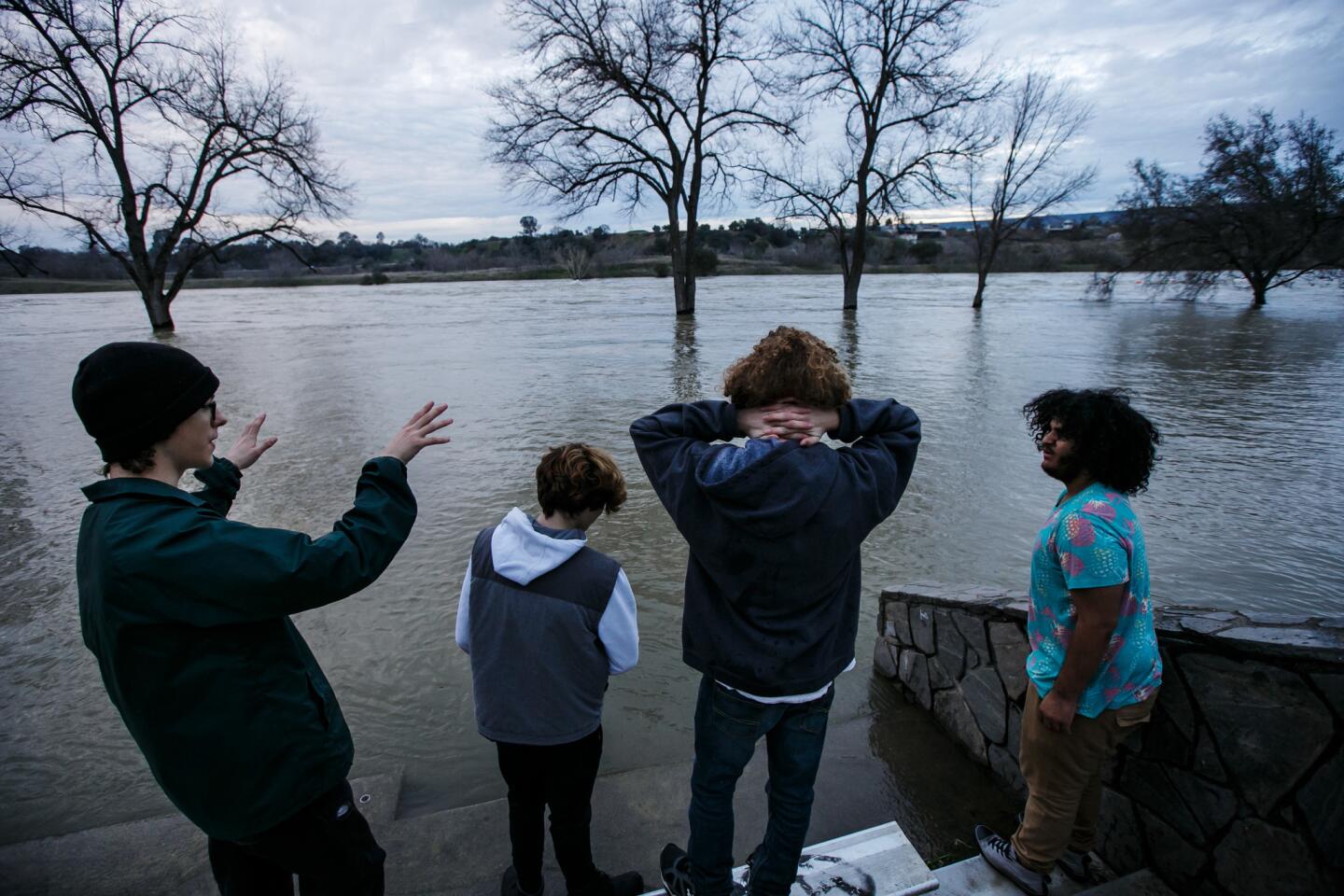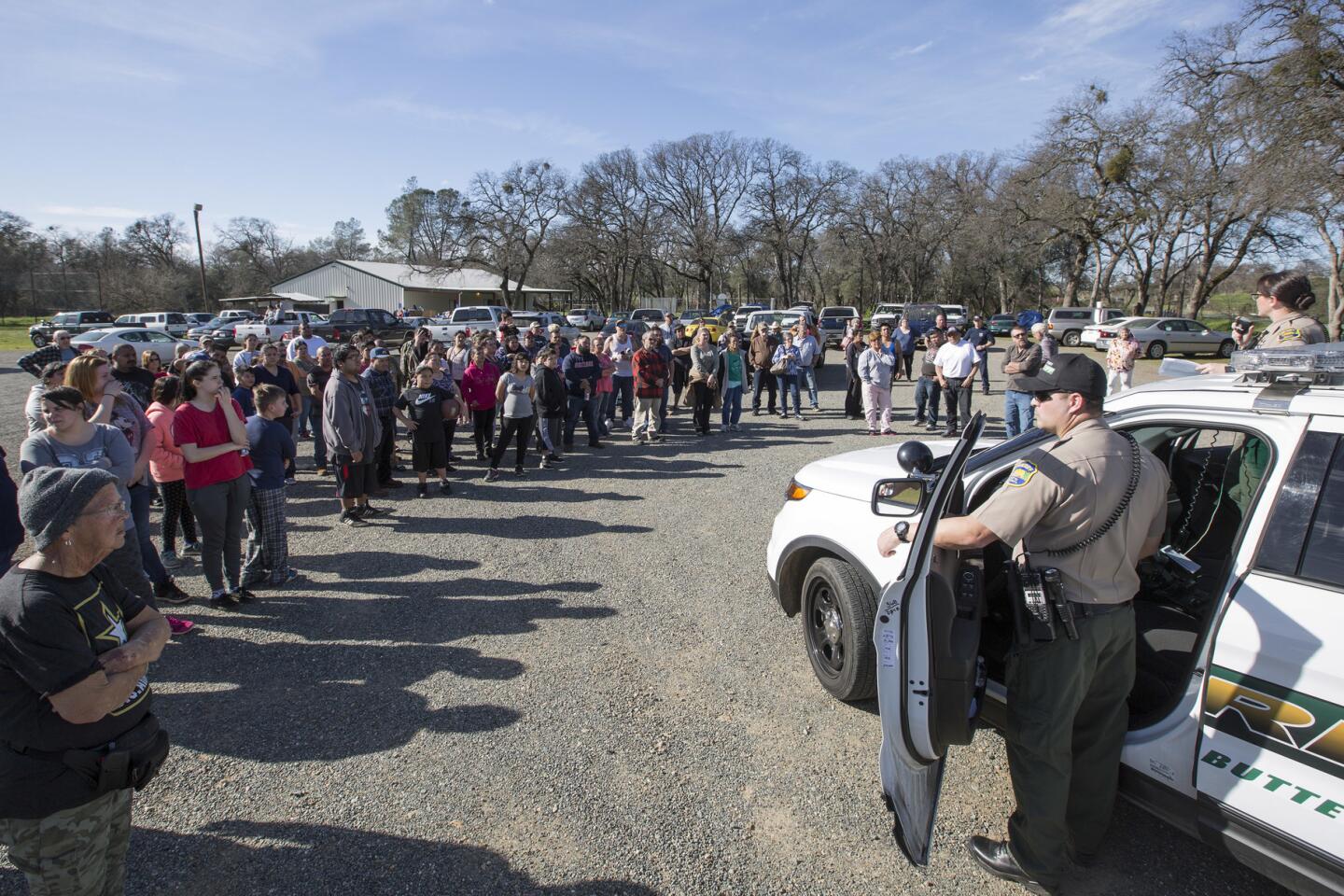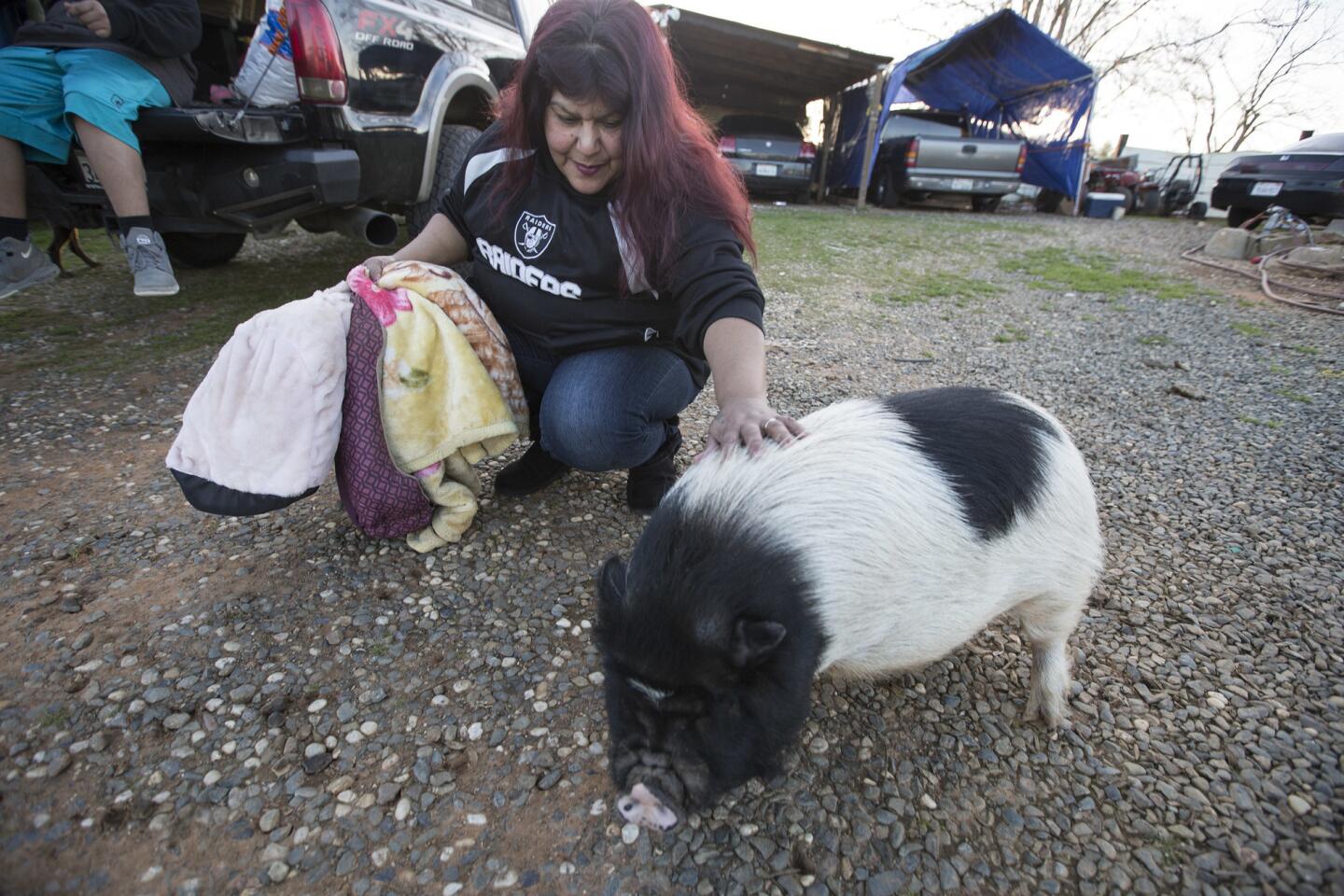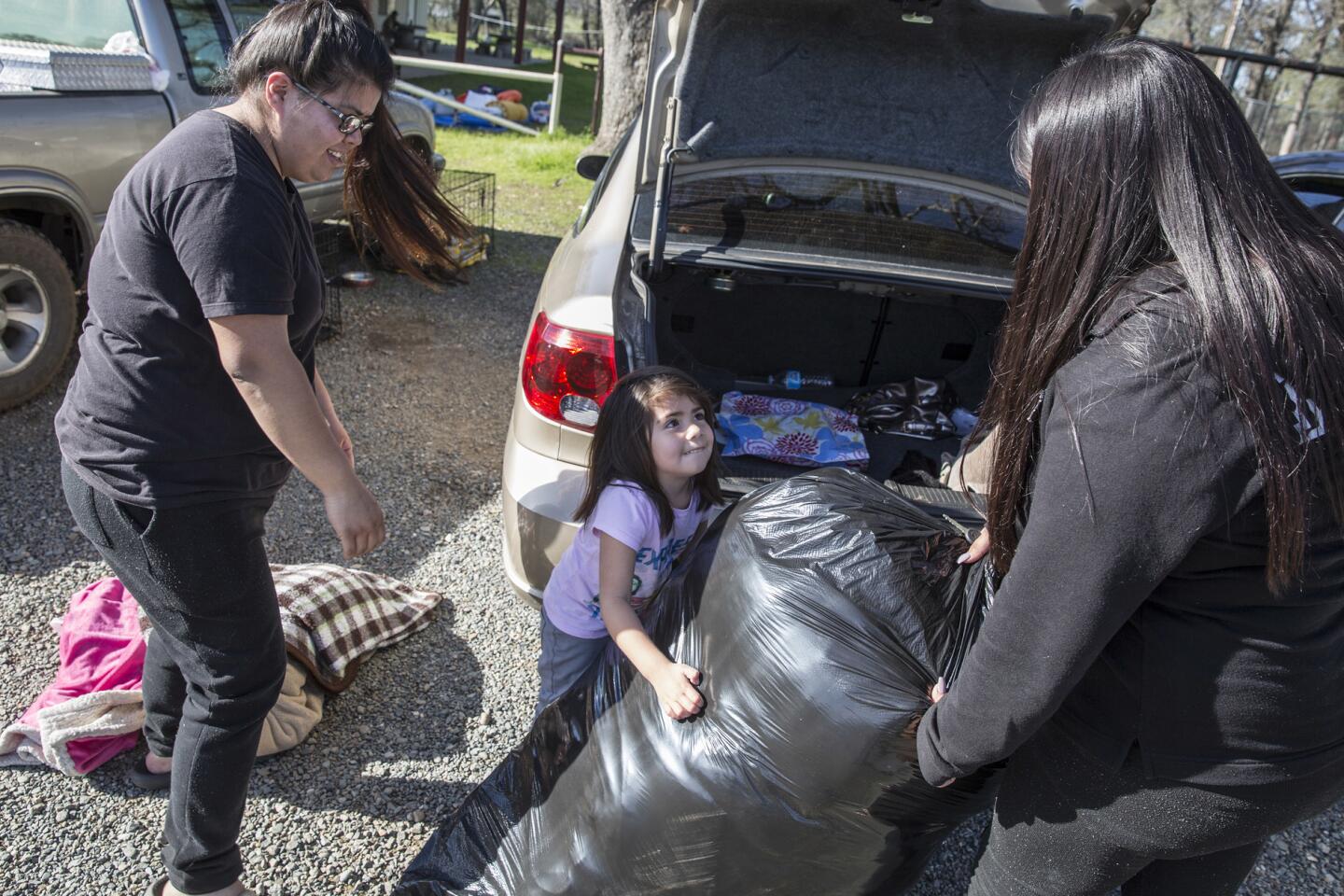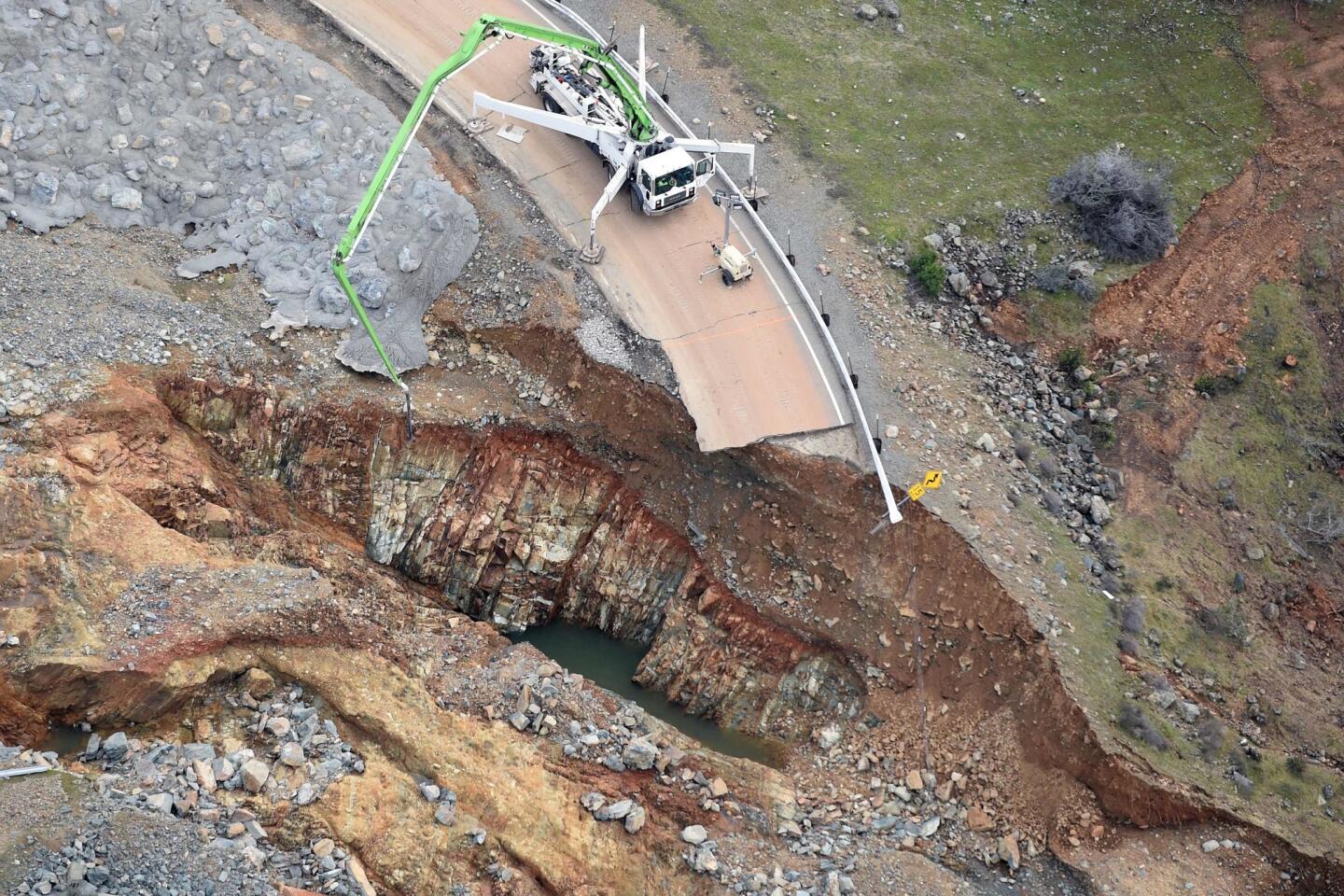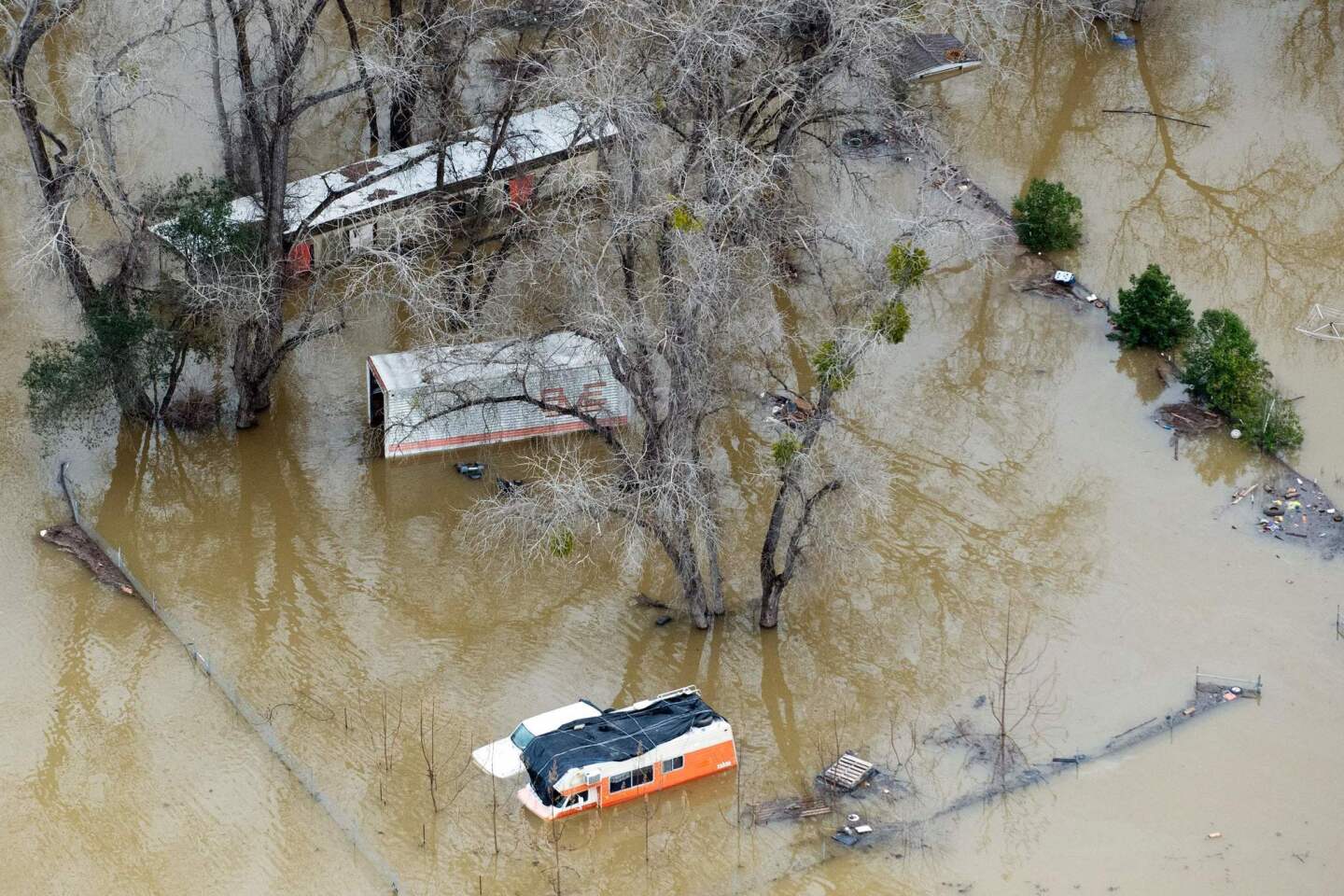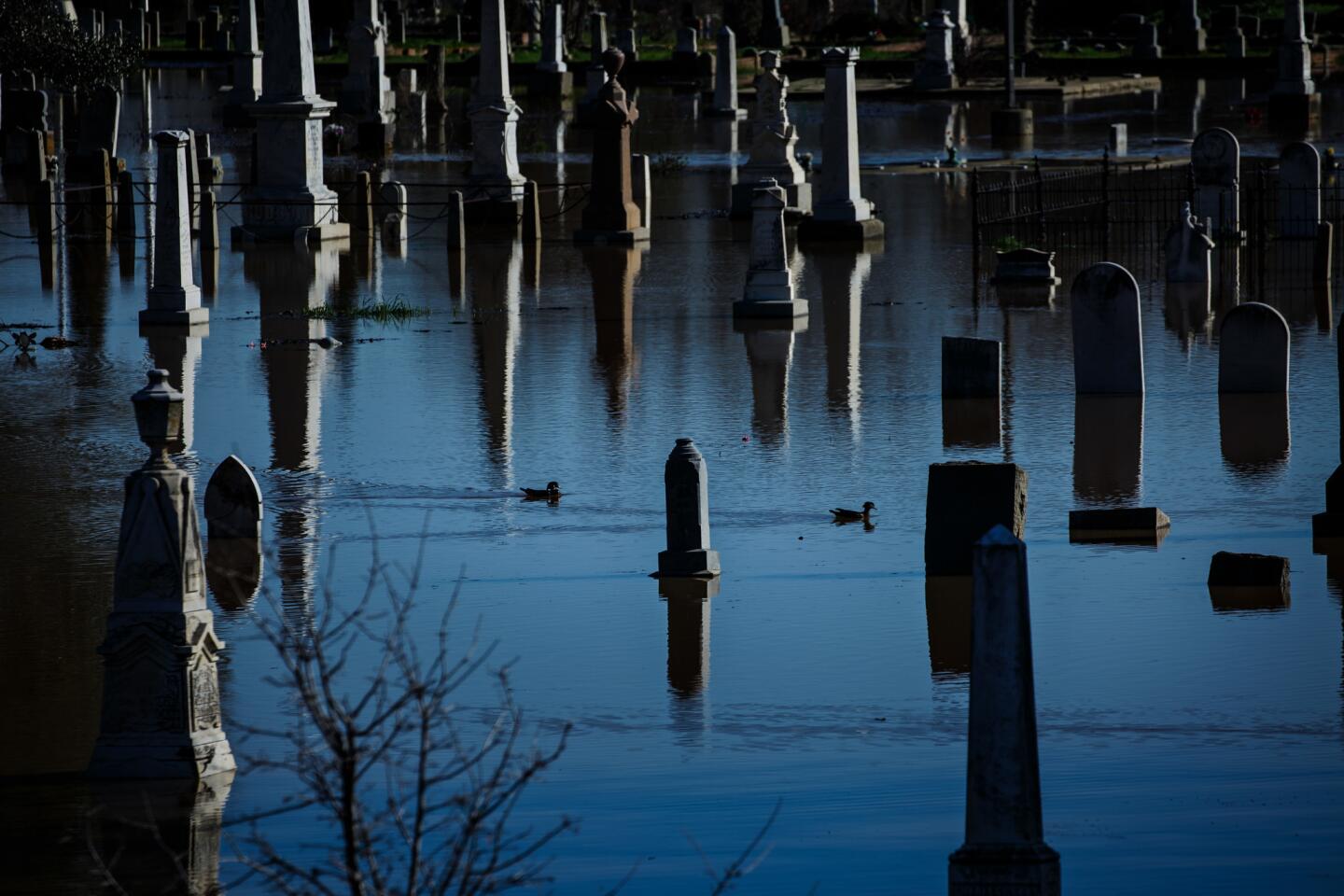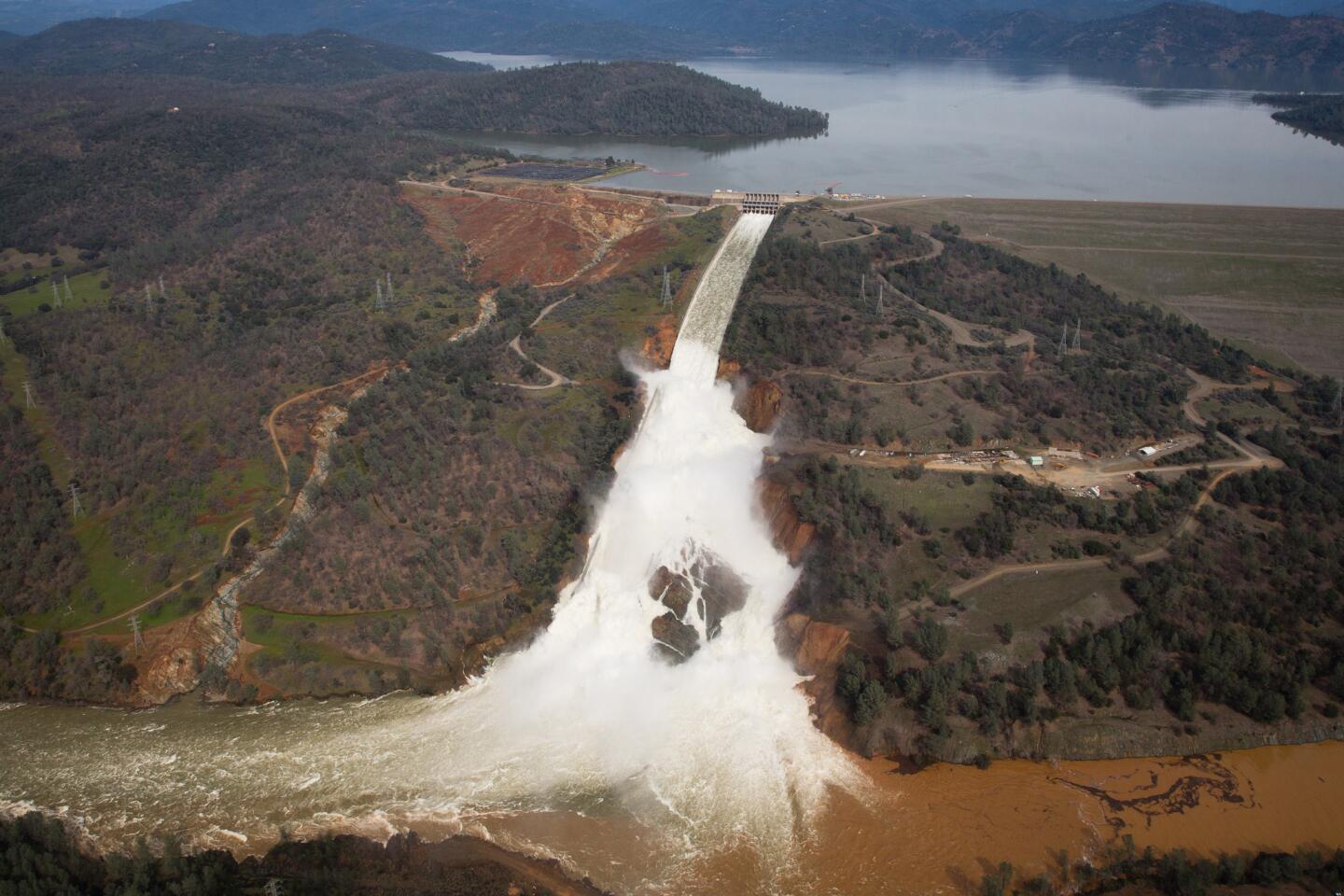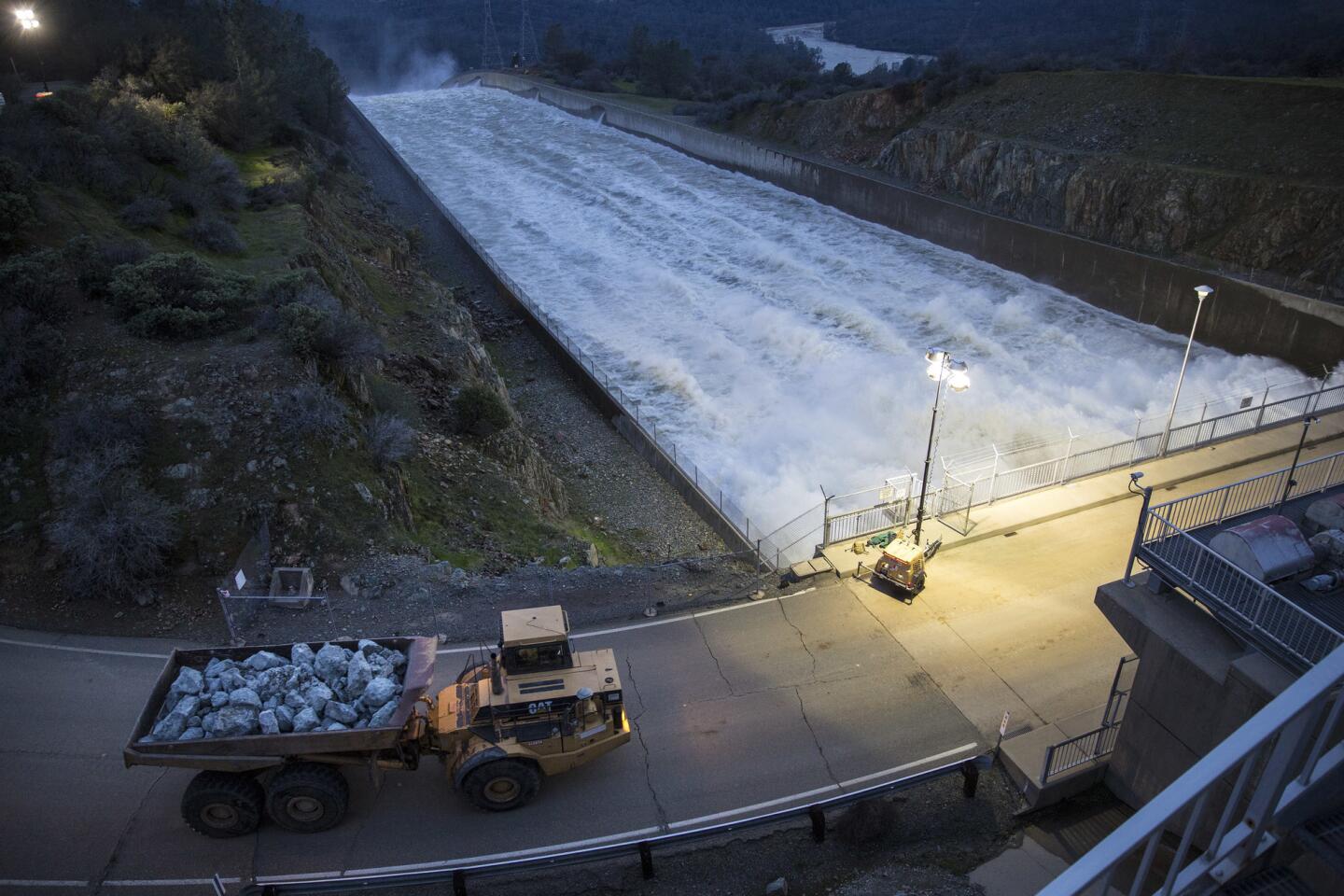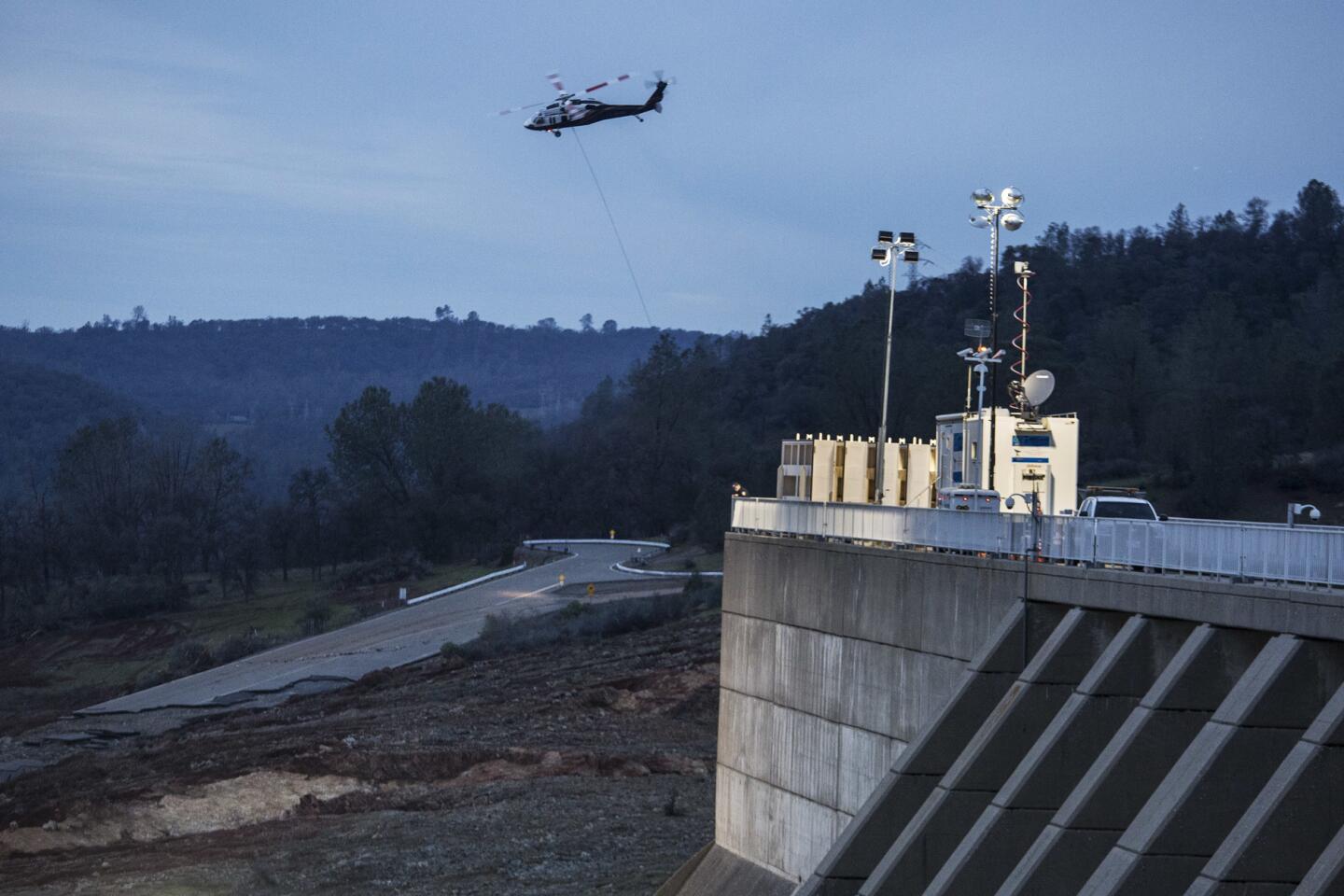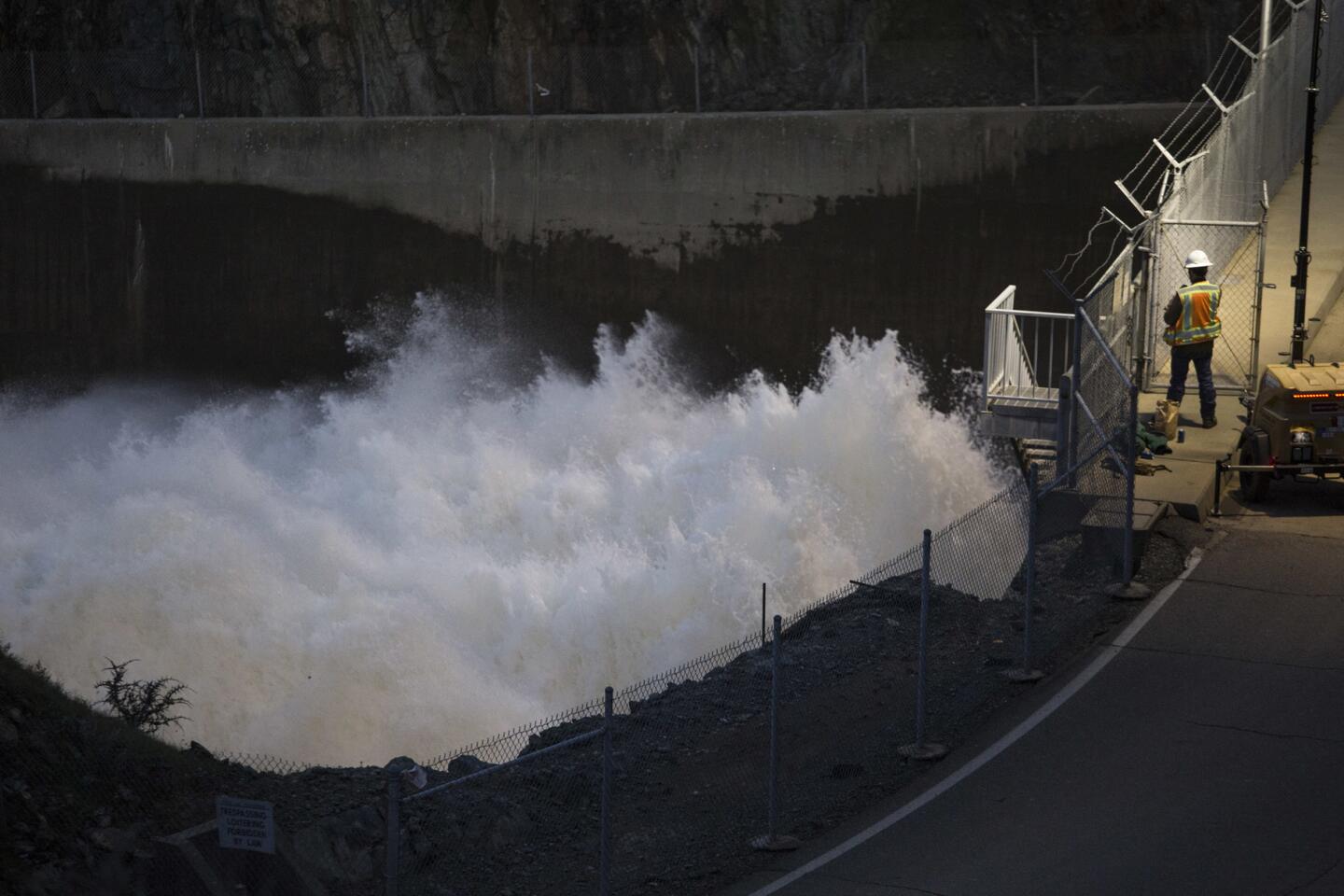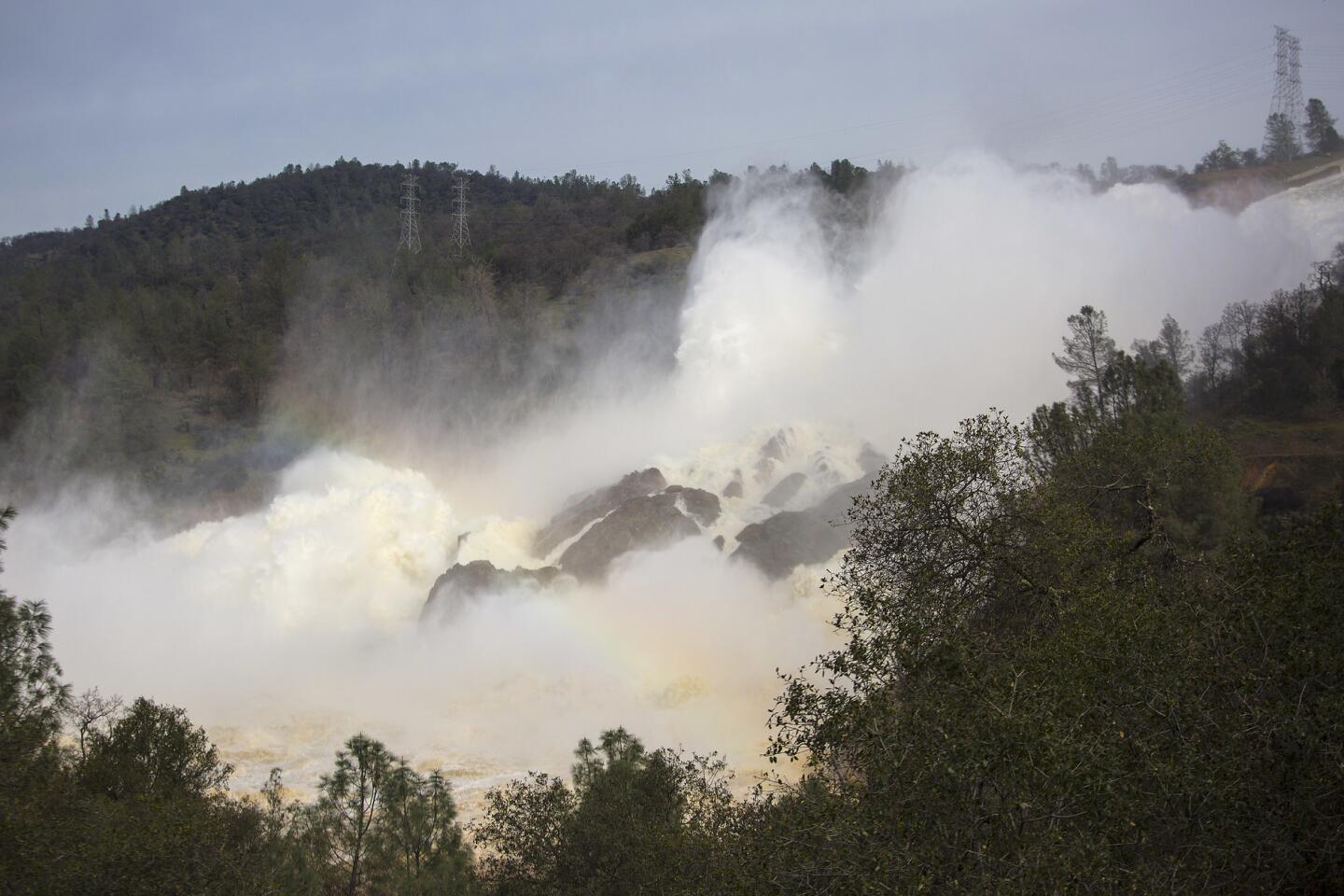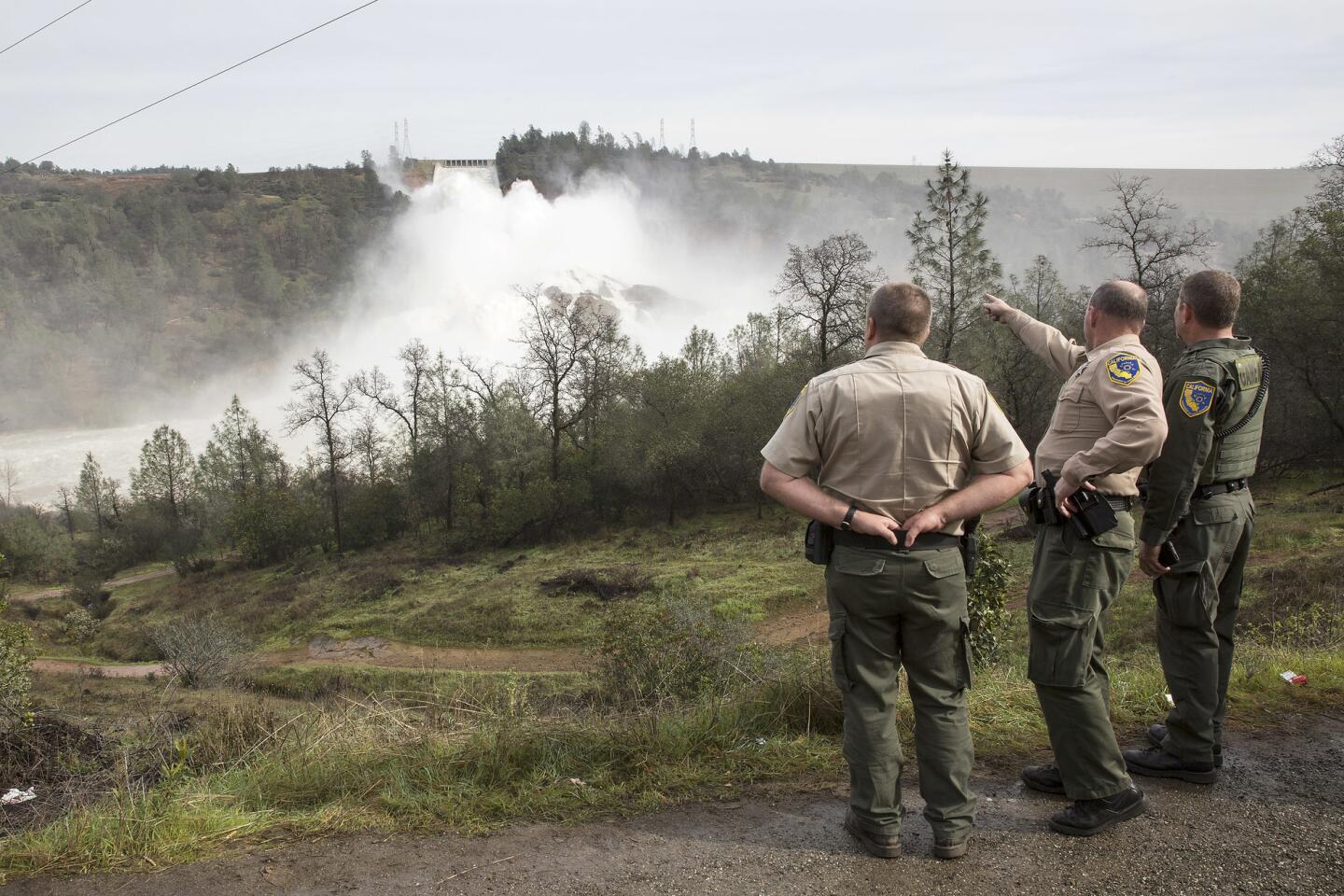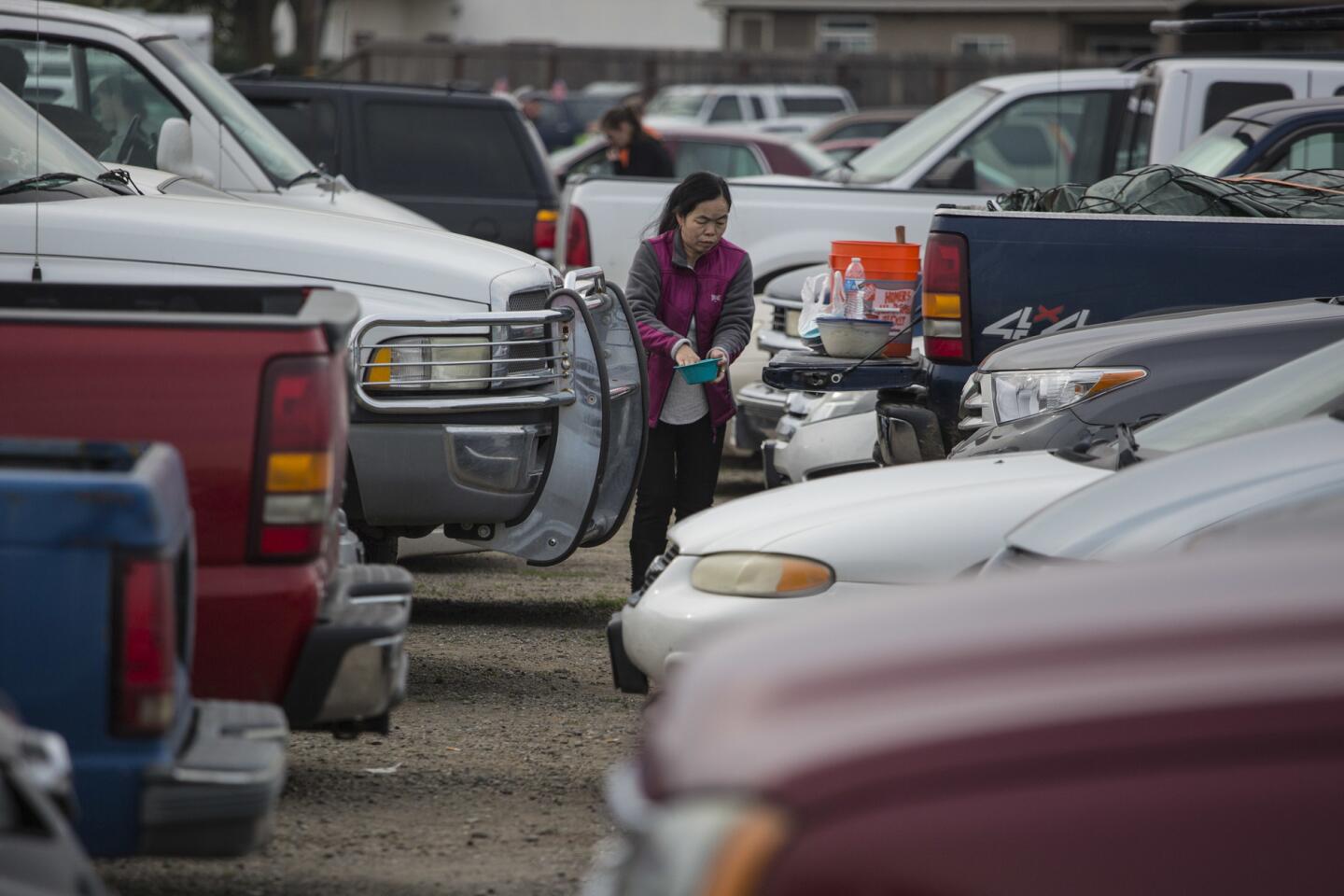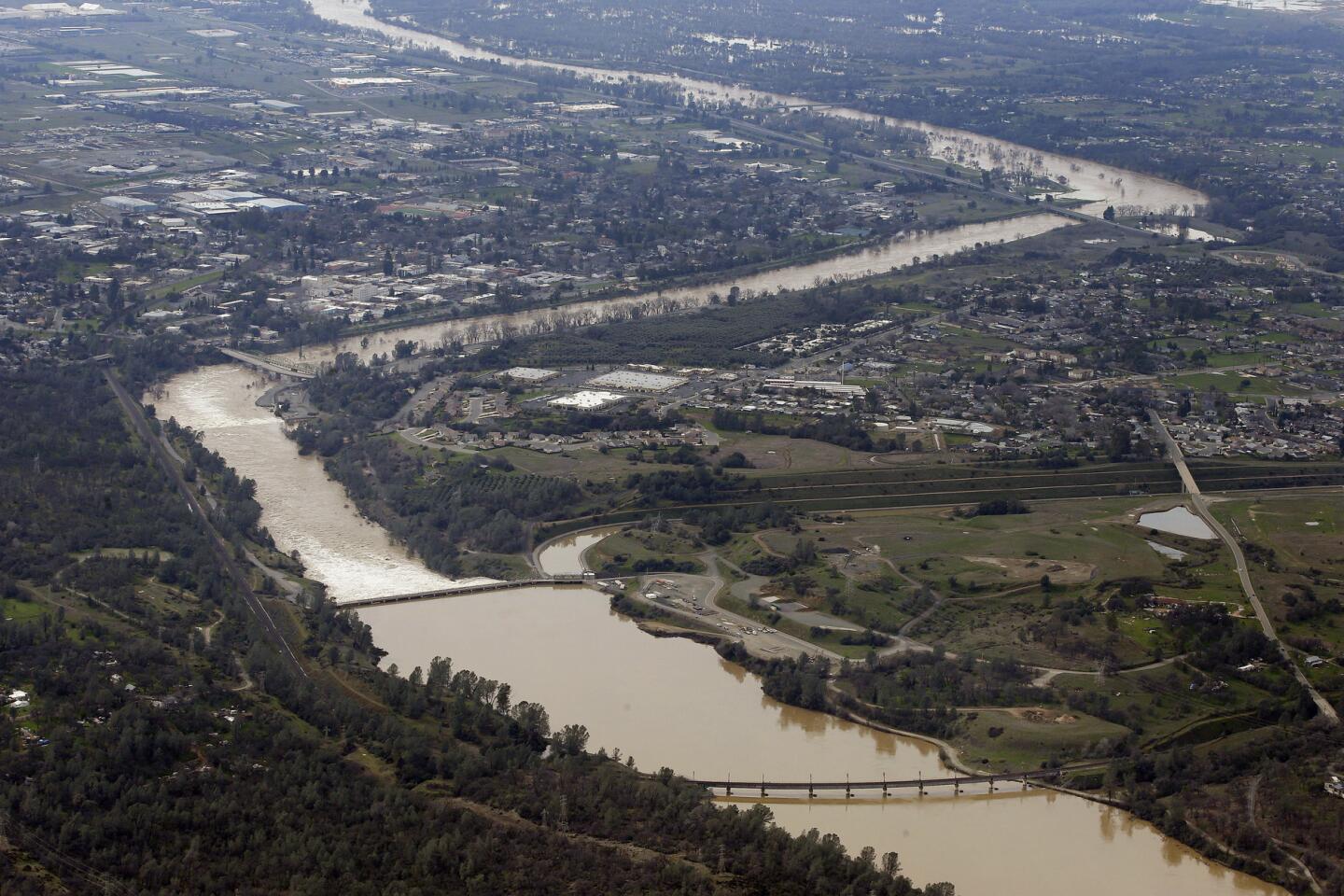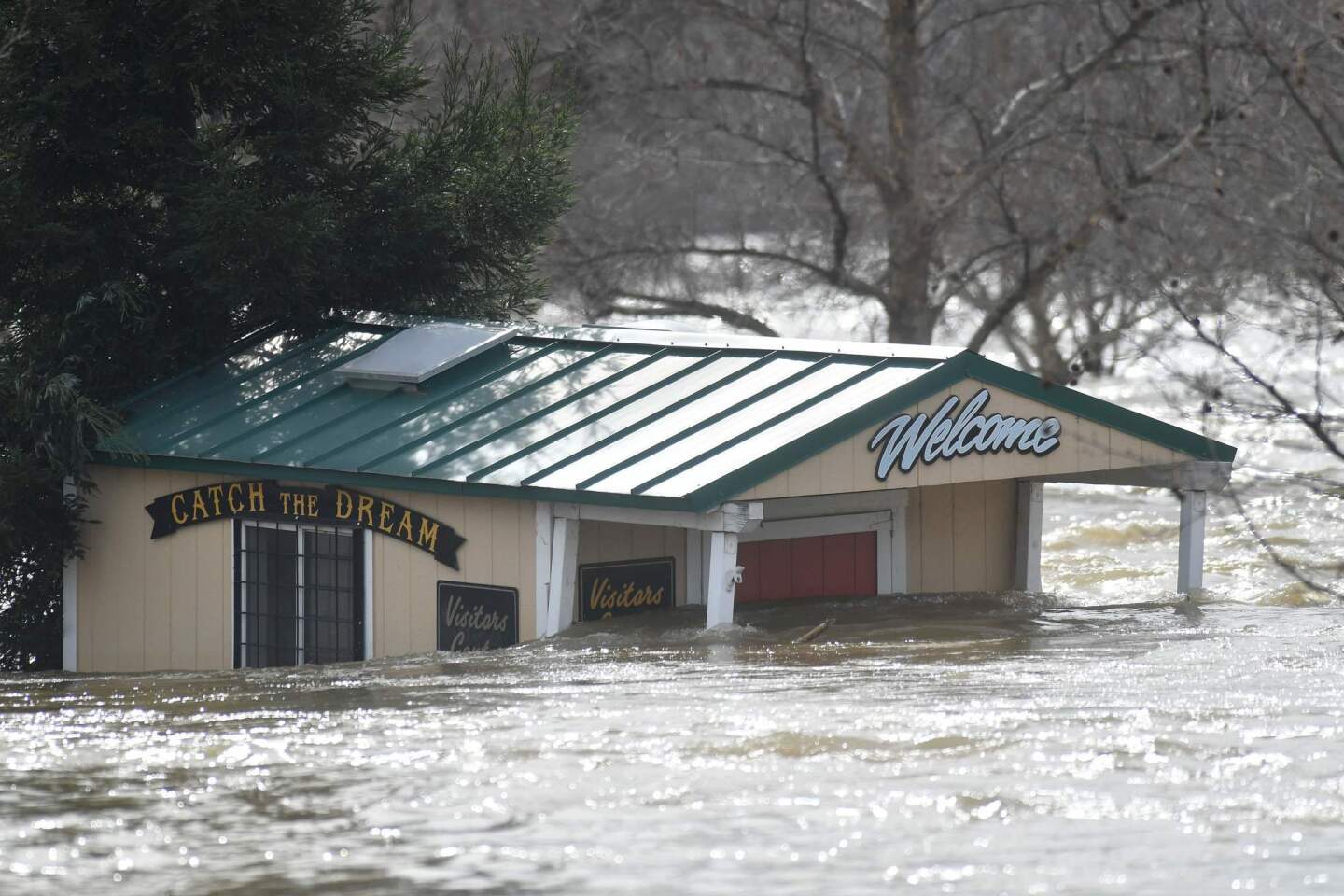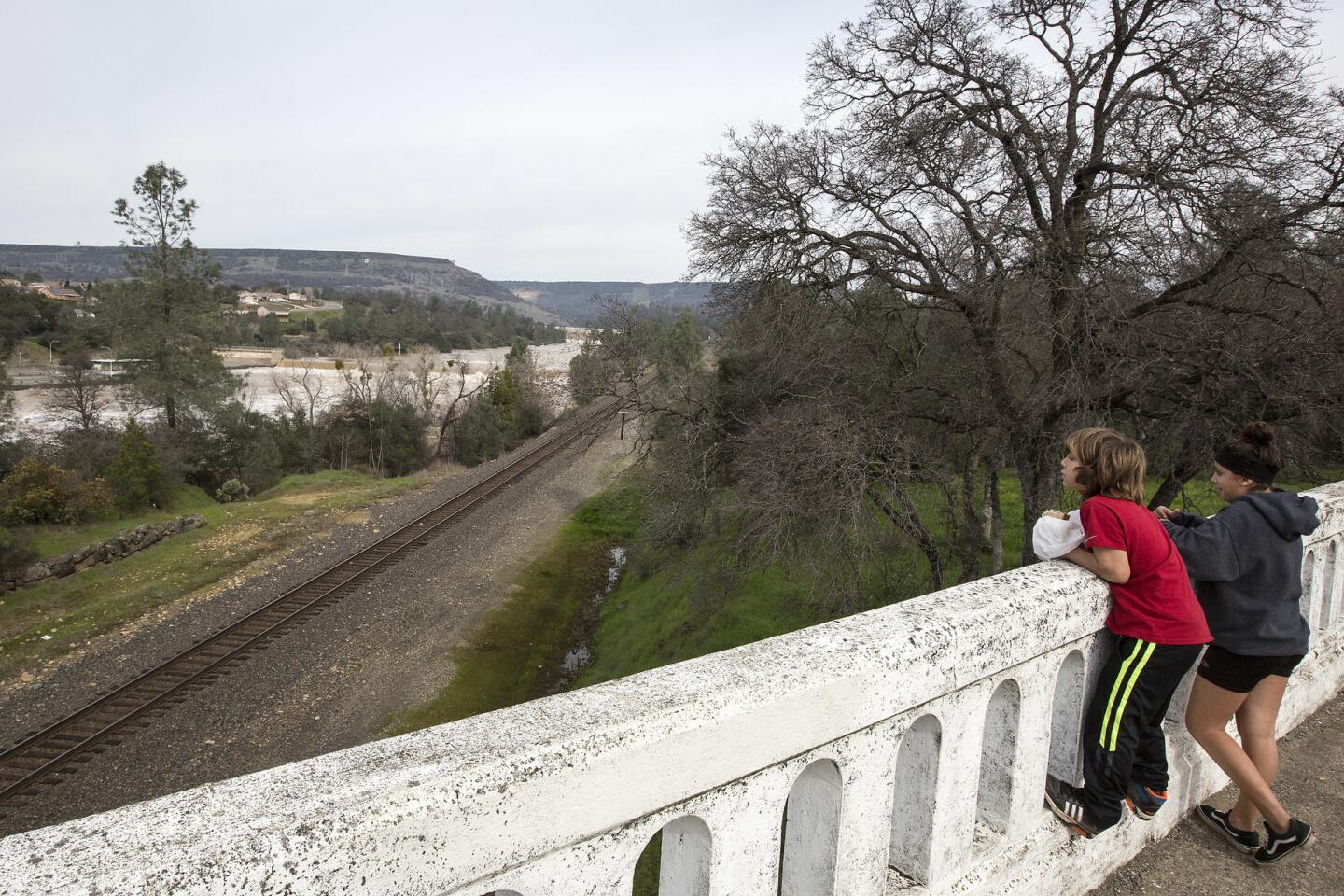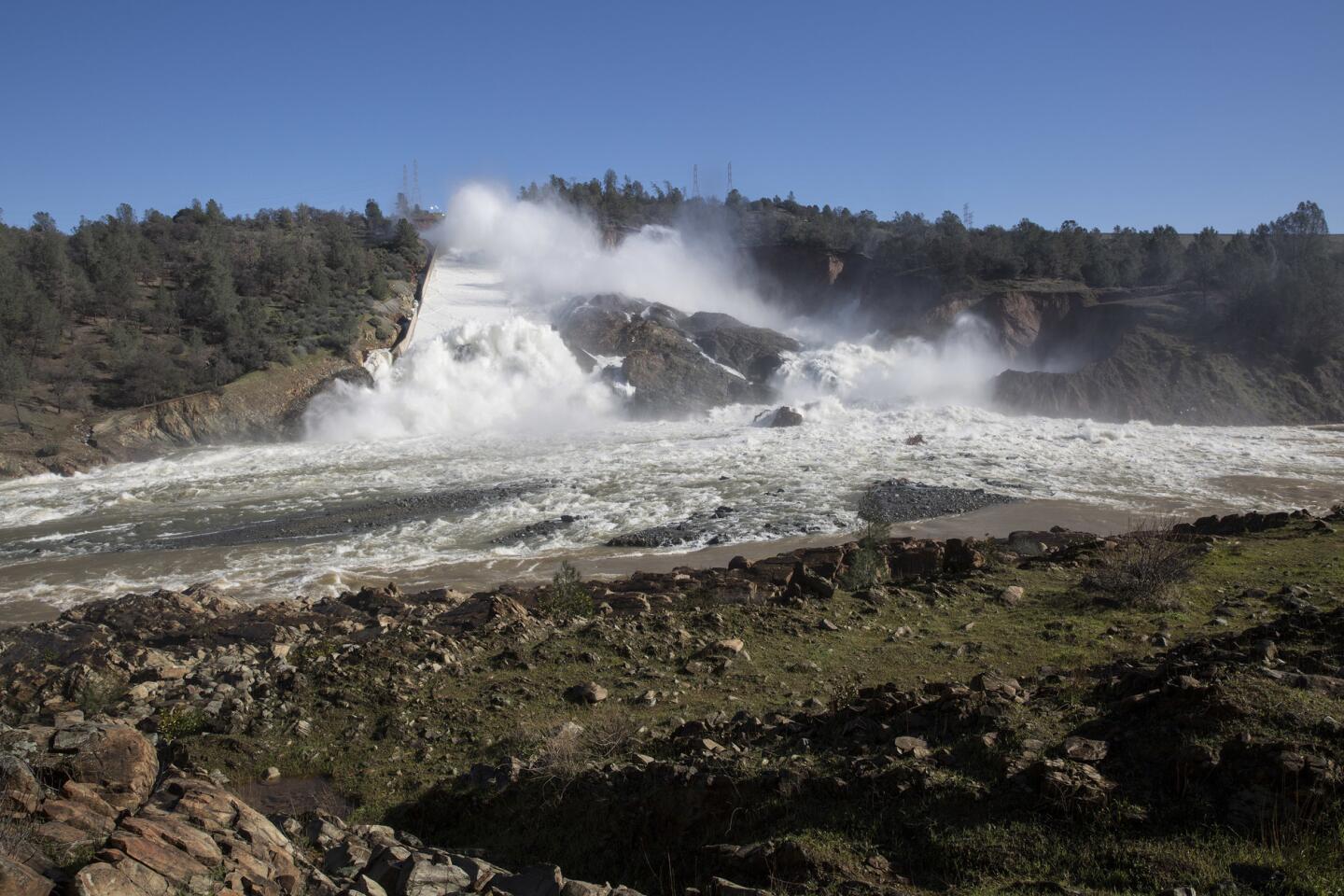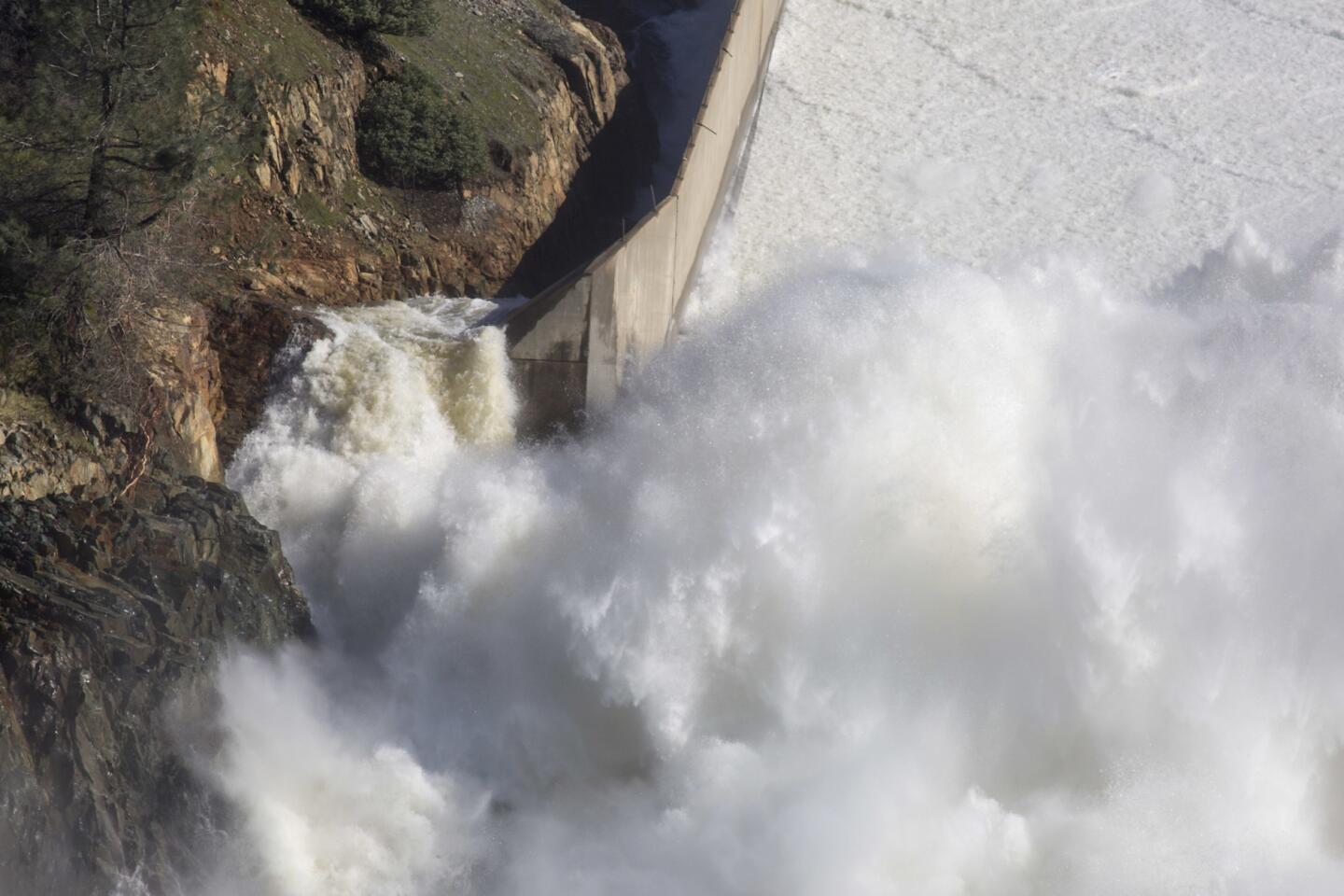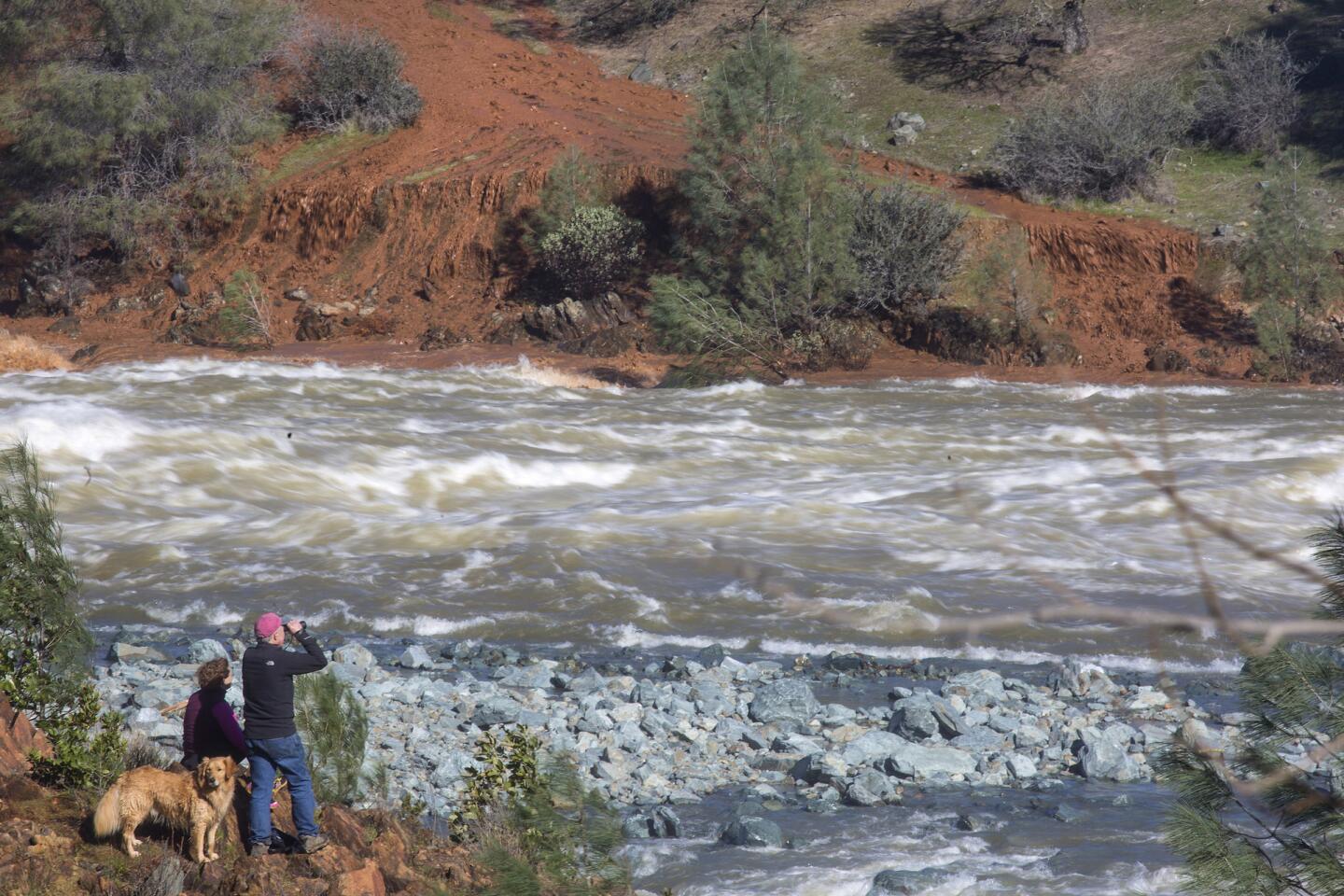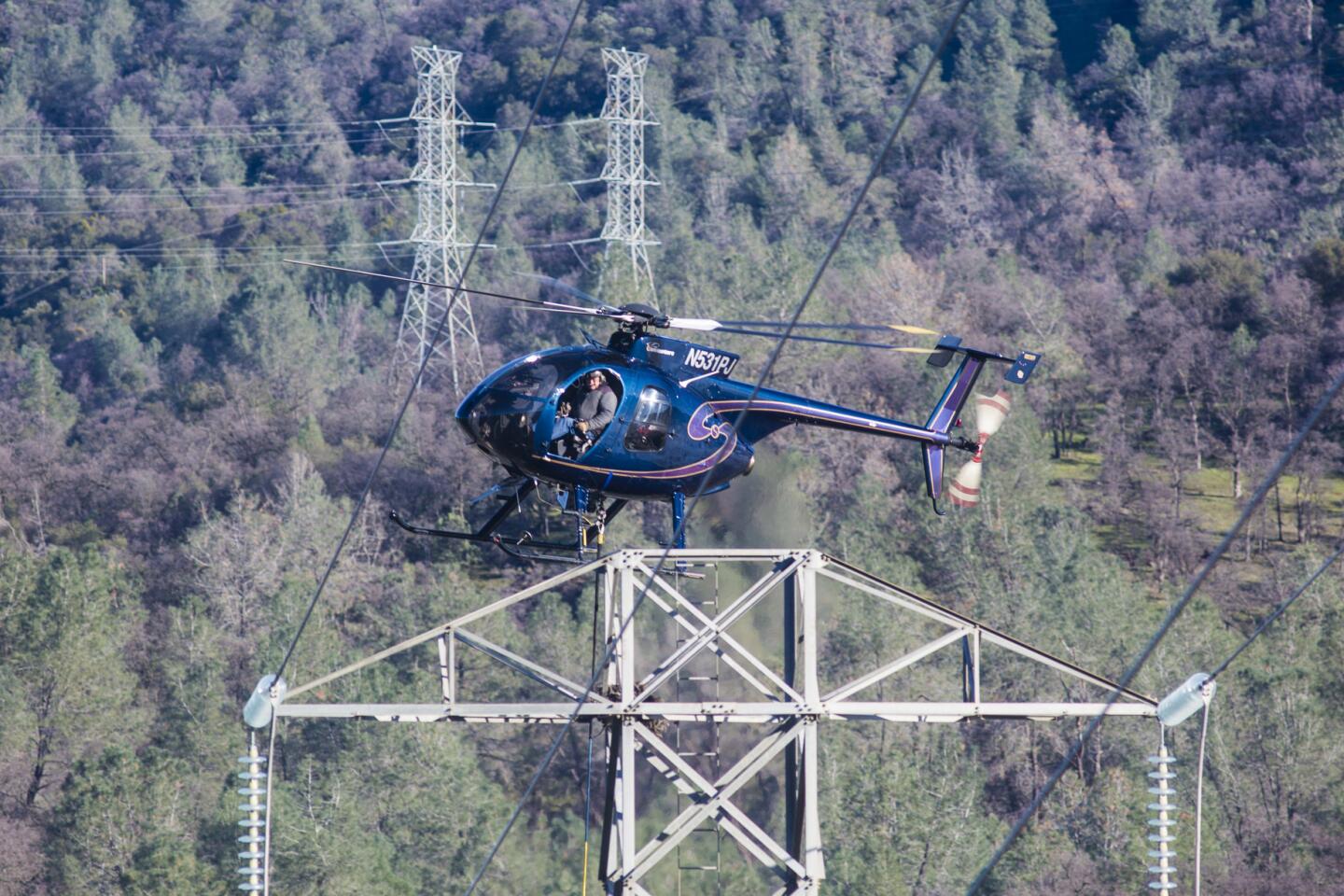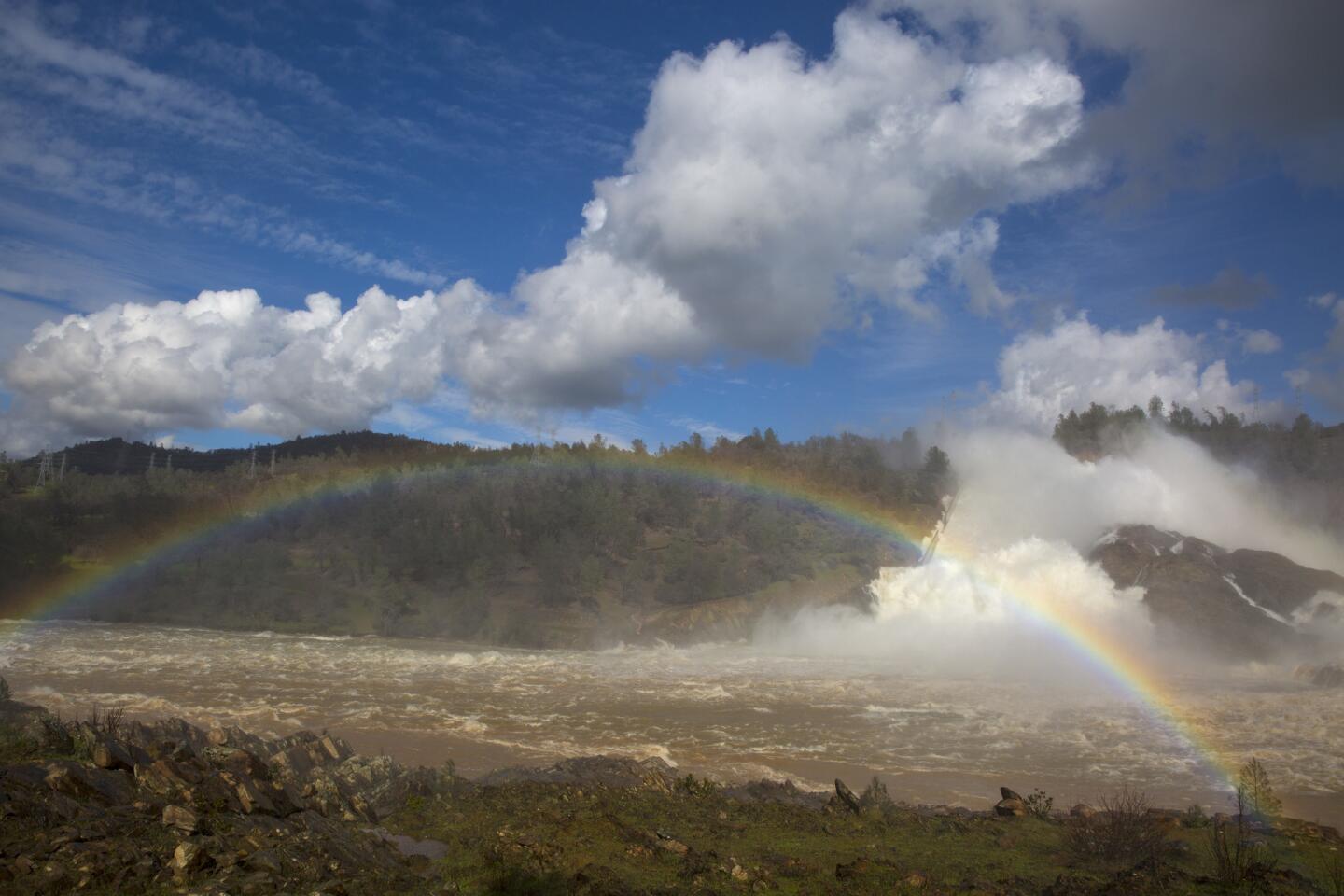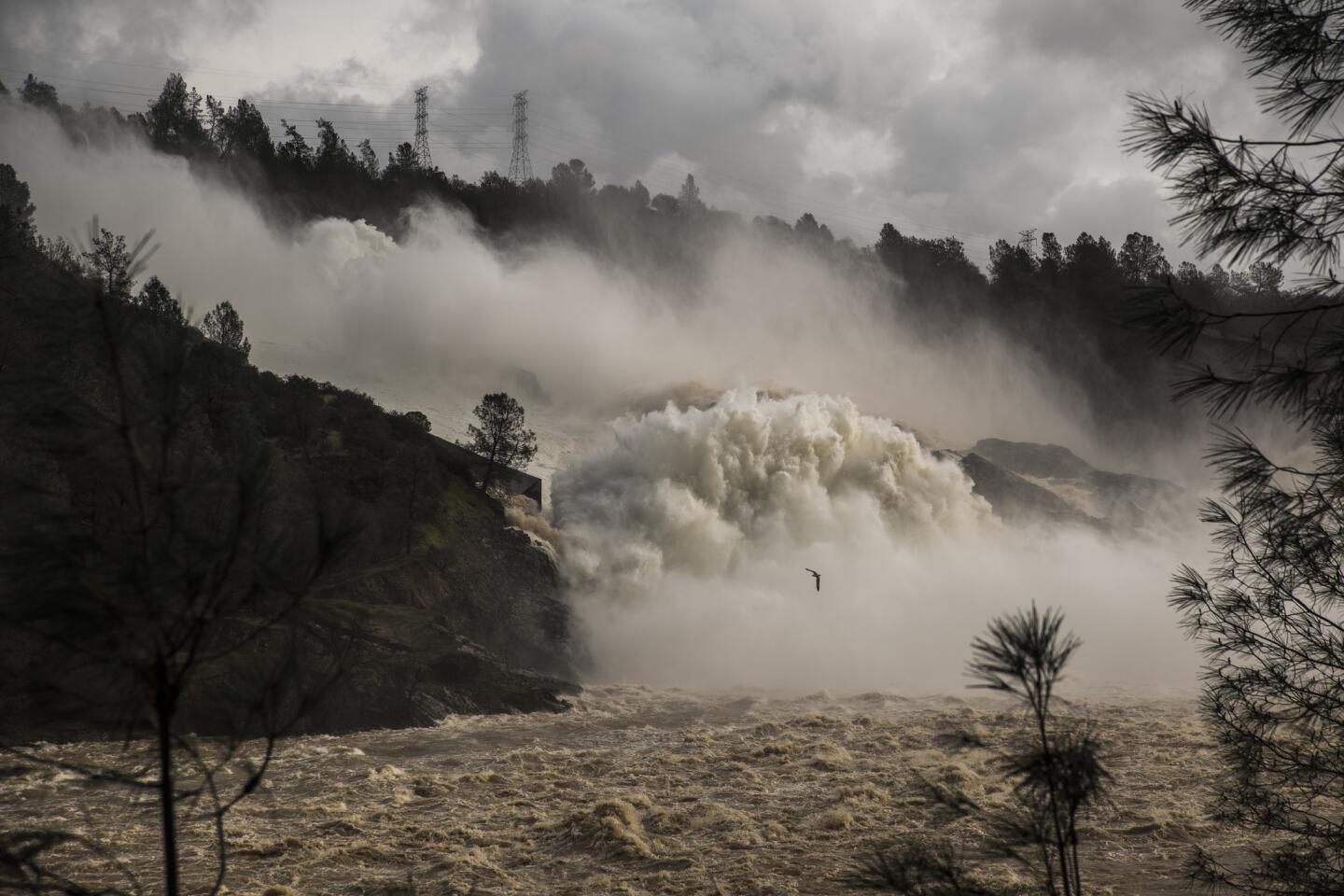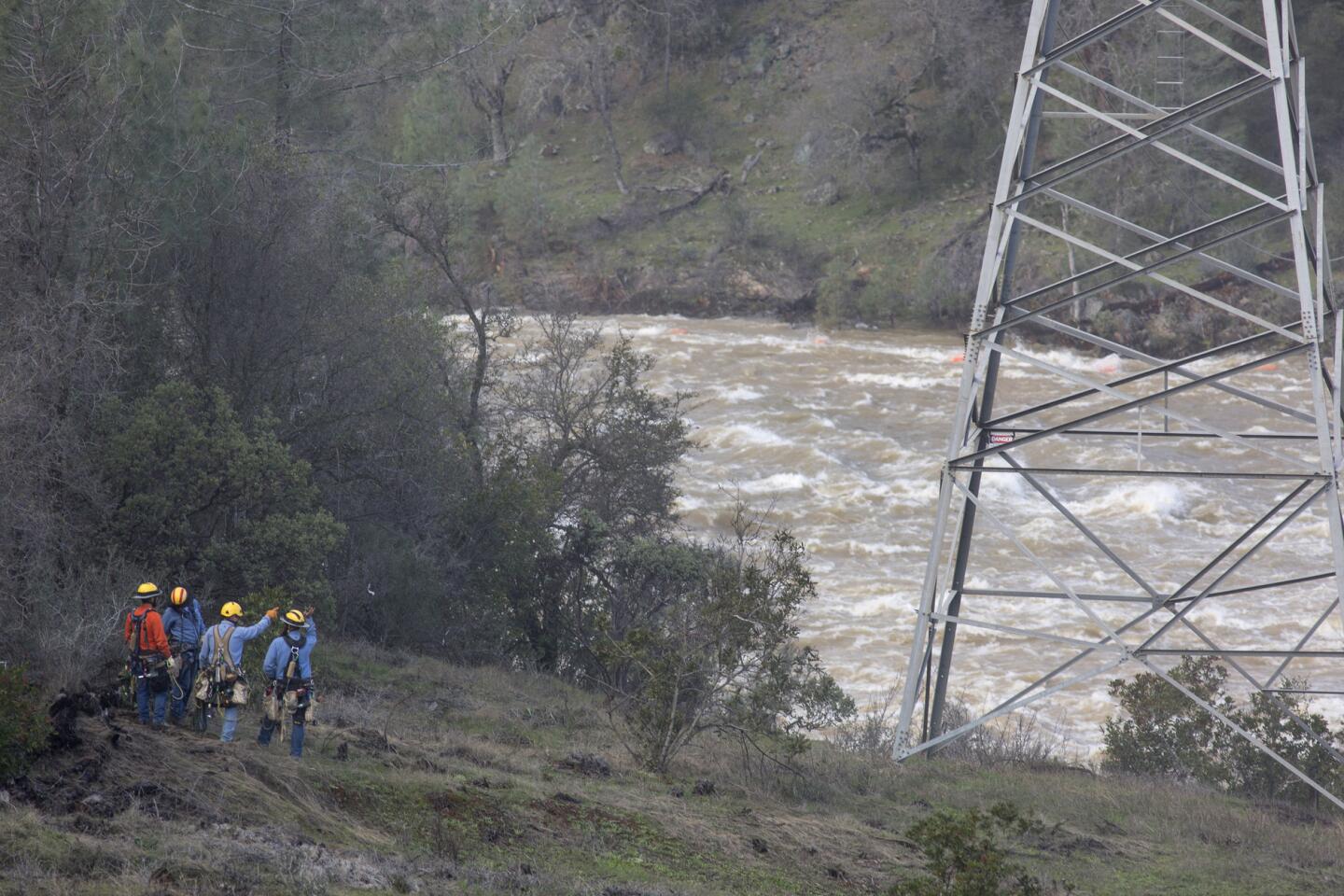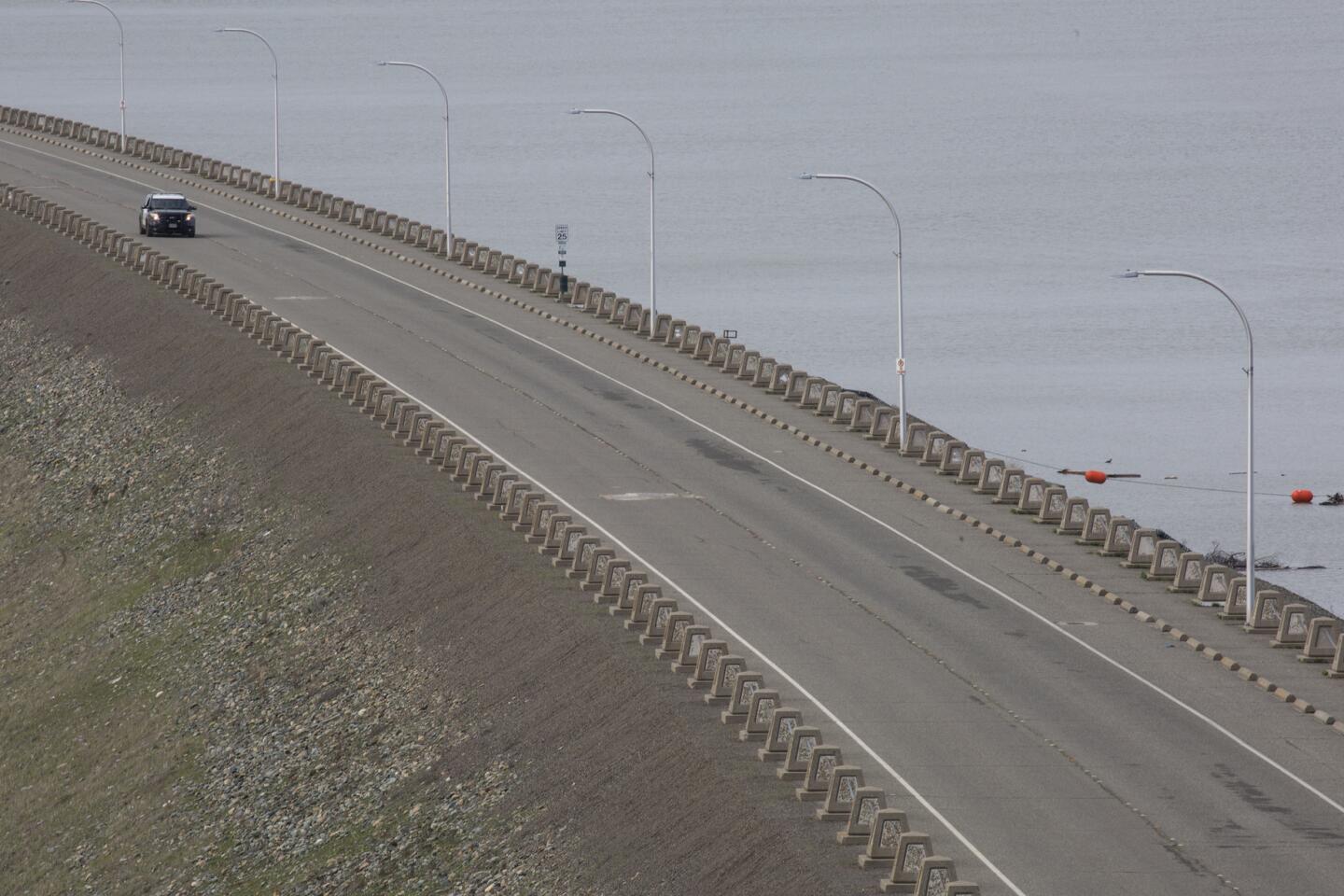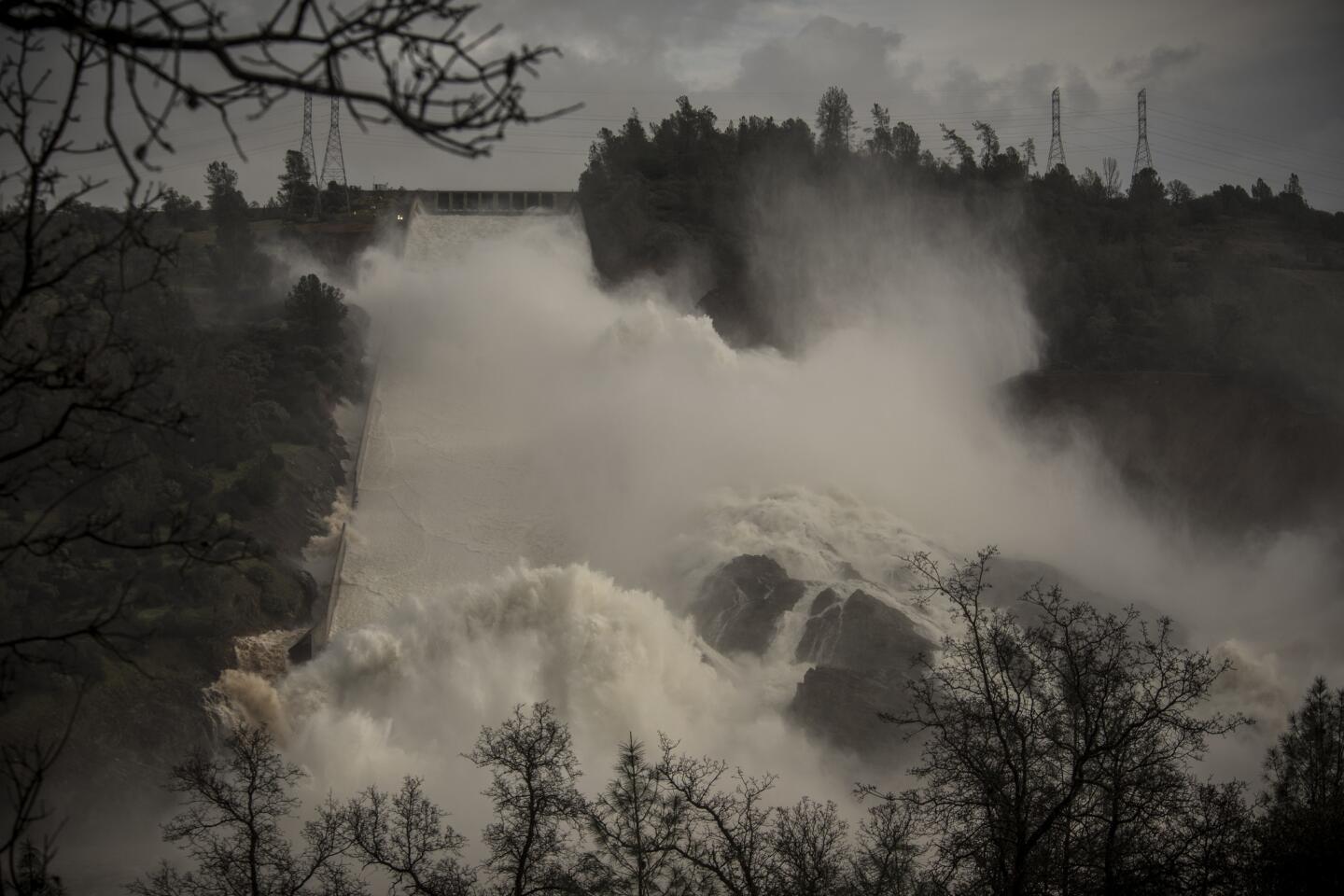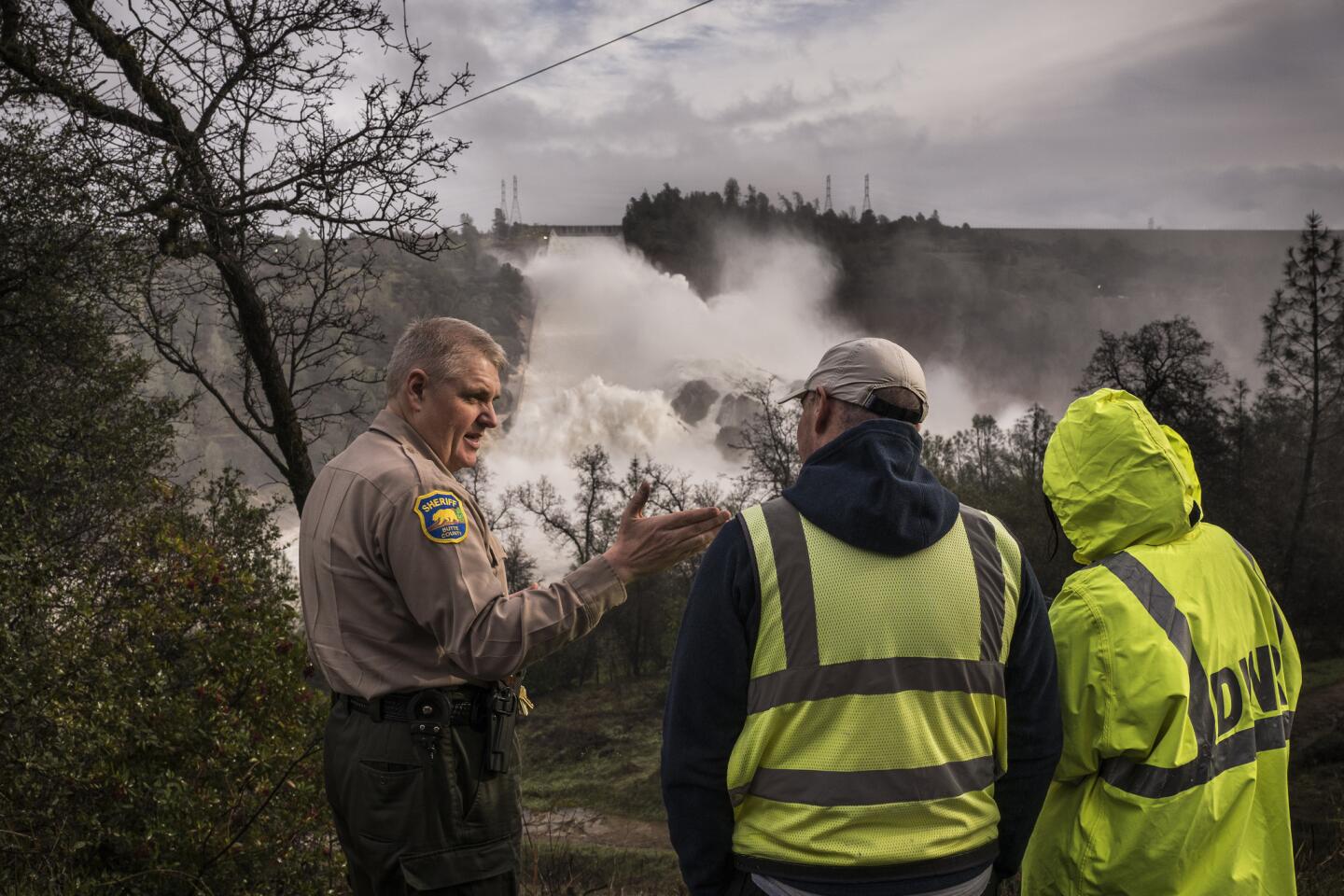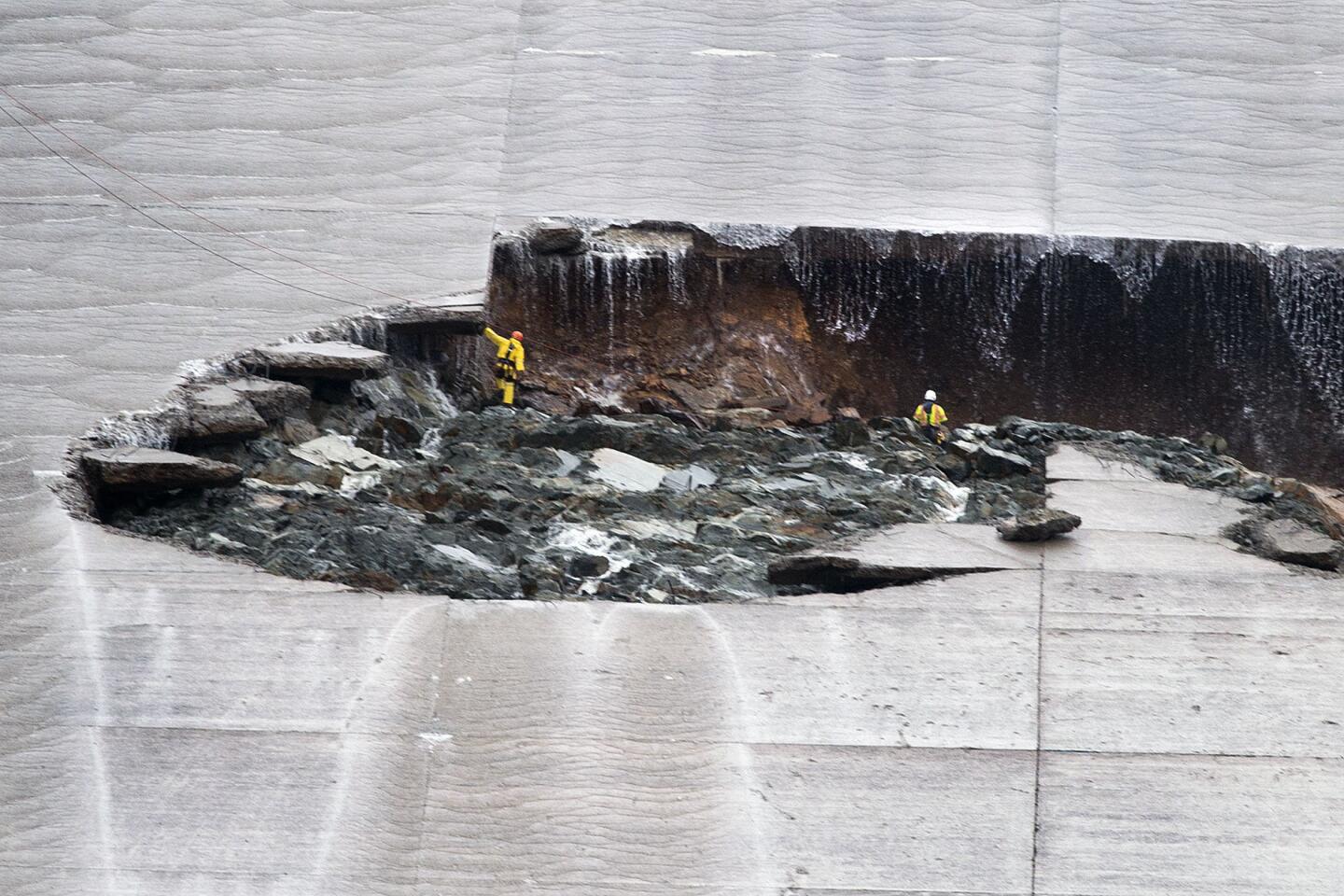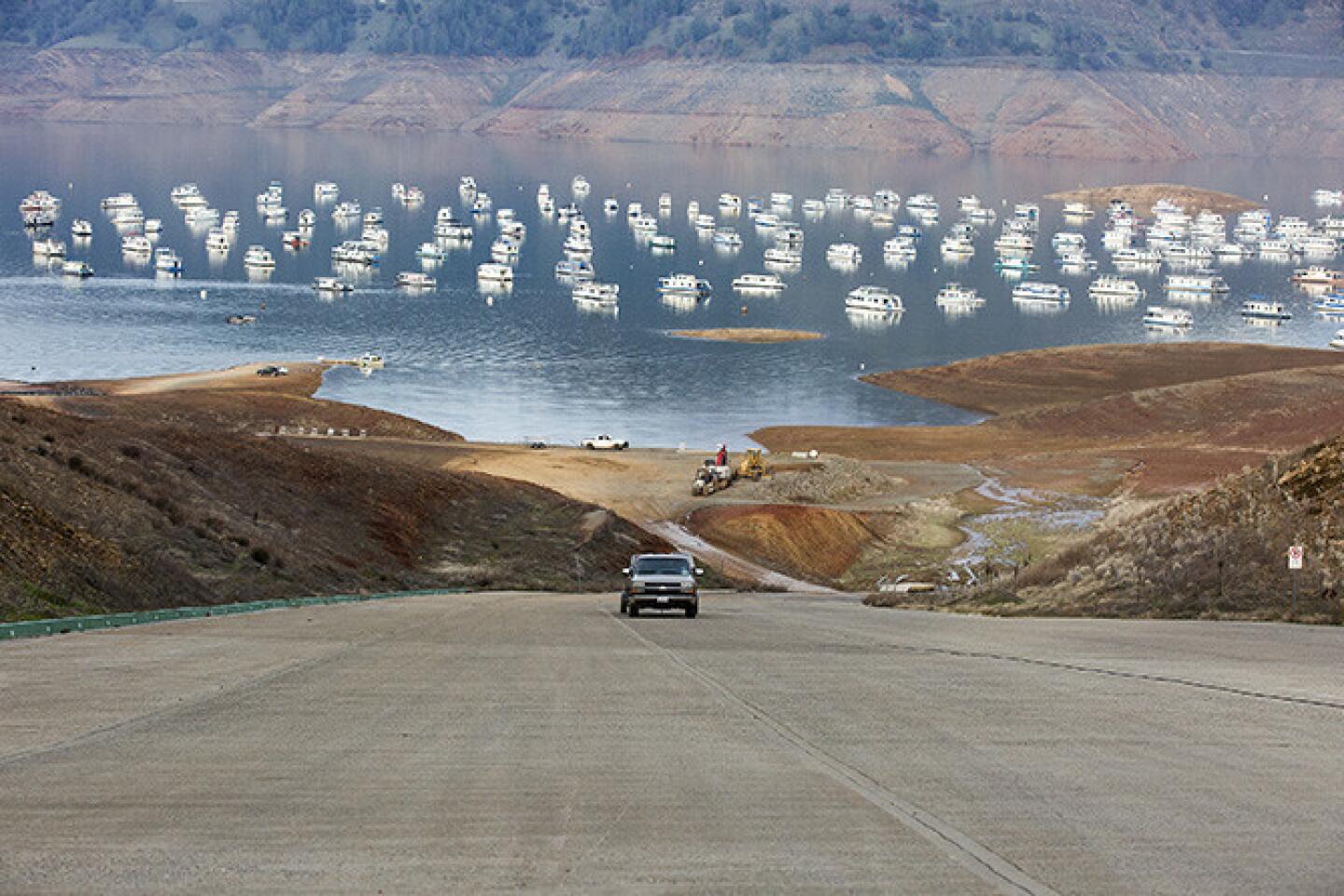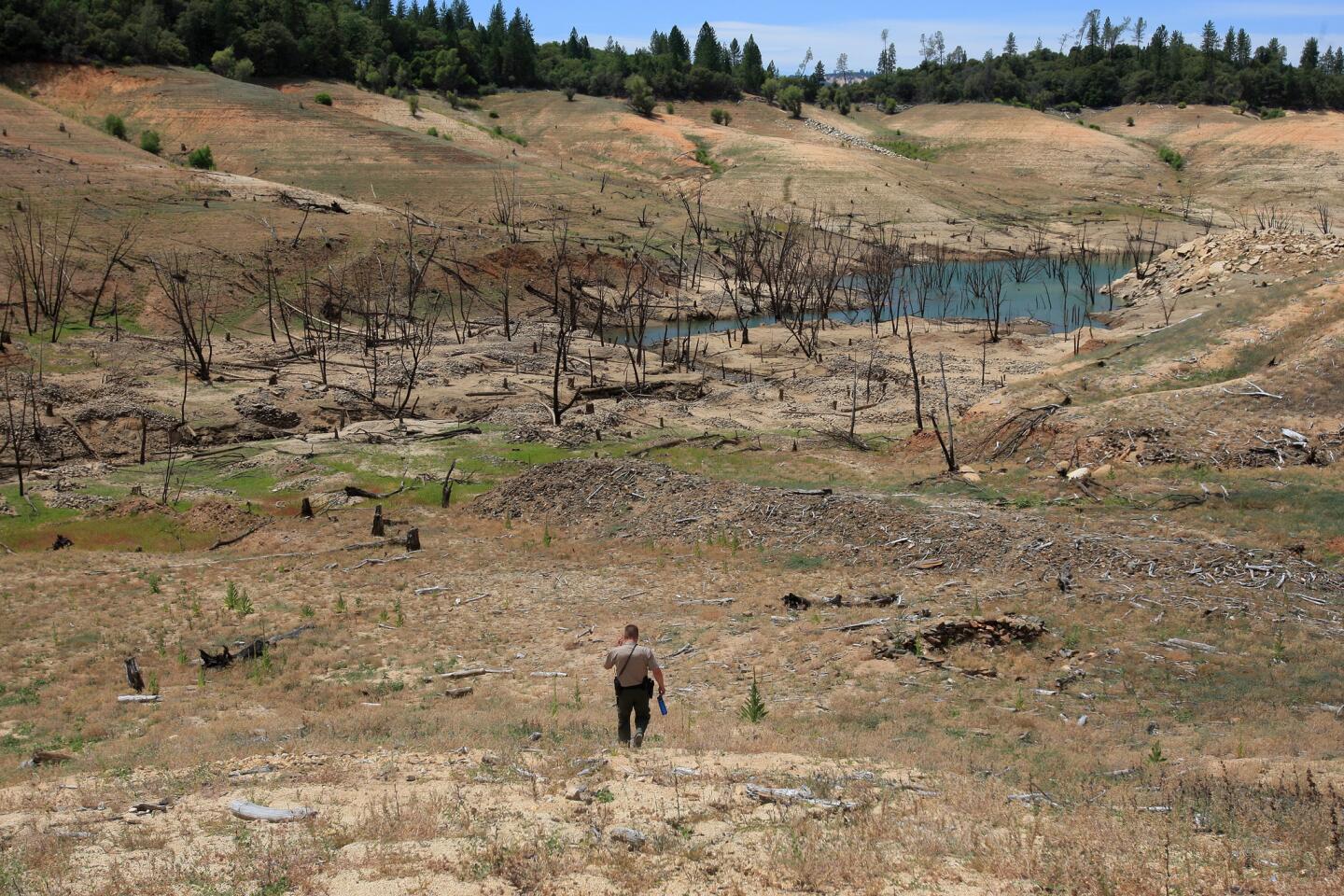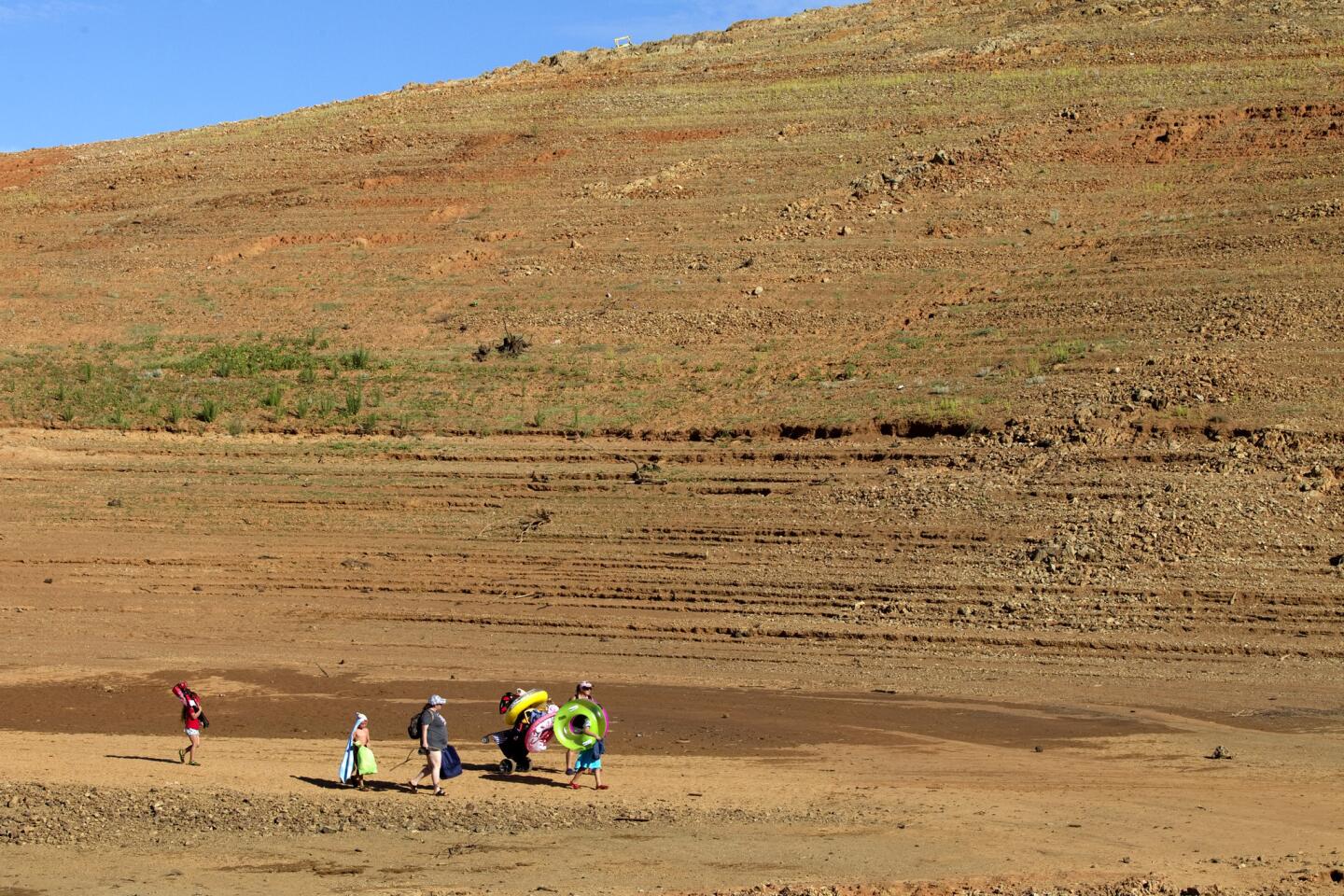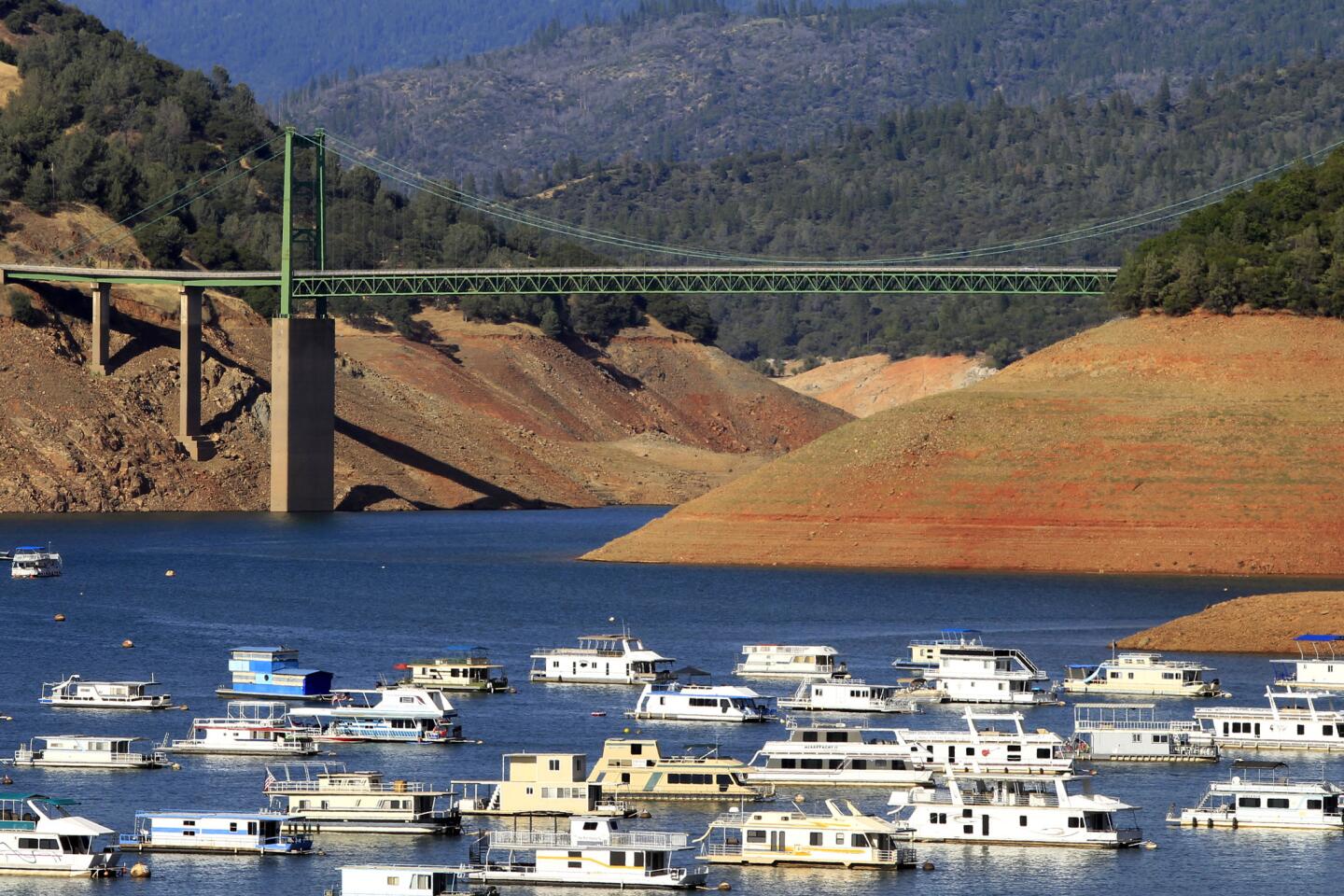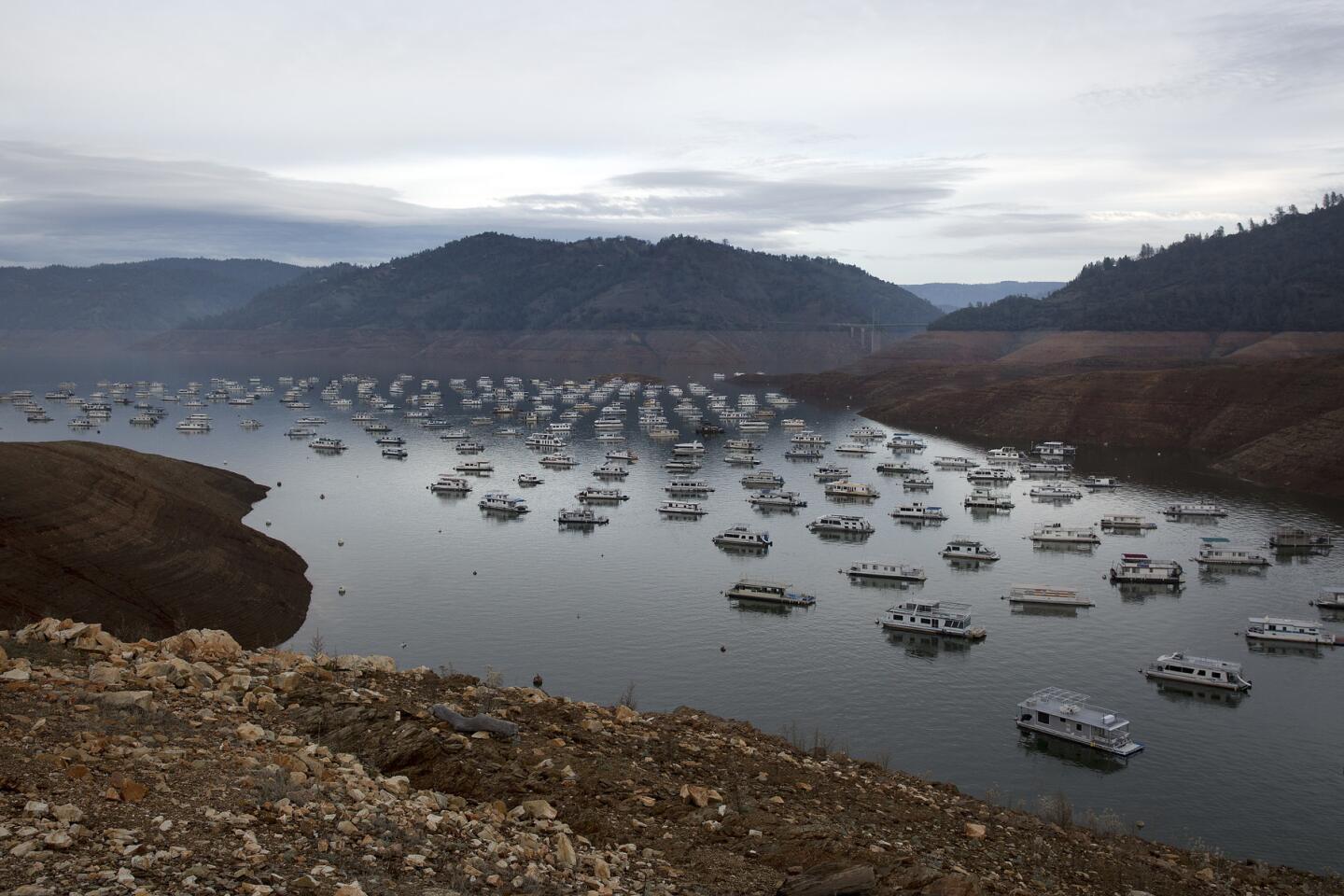Oroville Dam’s emergency spillway used for first time amid rising waters; officials say public safe
Reporting from OROVILLE — Capping days of tense planning at the nation’s tallest dam, water flowed down an emergency spillway Saturday at Oroville Dam for the first time after the dam’s main spillway suffered significant damage.
Water started flowing down the spillway into the Feather River early Saturday, with officials continuing to emphasize there was no imminent threat to the public or to the integrity of the dam.
The state Department of Water Resources said Lake Oroville — the linchpin of the state’s water system that sends water from the Sierra Nevada south to cities and farms — was rising to the point where water would flow down the emergency spillway. At 8 a.m., the agency said the spillway was now in operation.
Eric See, a spokesman for the Department of Water Resources, said it was the first time the auxiliary spillway was used to drain water from the lake since the dam was finished in 1968.
“This is a very unusual event for us at Lake Oroville,” See said. “It’s the first time the structure has ever been used to spill water.”
Water is flowing down the emergency spillway at a rate of 6,000 to 12,000 cubic feet per second, while 55,000 cfs was going down the main spillway, he said.
“Relatively speaking, it’s a small spill,” See said, noting that the flow over the emergency spillway is expected to end in the next 38 to 56 hours.
“The lake will actually drop and the spill will cease,” he said.
Officials said the flow of water into the Feather River is about half of the downstream flood capacity and consistent with releases made at the same time of year during previous wet years such as this.
Bill Croyle, acting director of the water department, reiterated that the flow is less than half of what the system is designed to handle.
“The dam is not threatened by these conditions,” Croyle said. “These kinds of flows are typical for this kind of runoff period.”
The agency is expecting a few dry days ahead before another storm hits later in the week, he said. The large snowpack means the agency will have to continuously monitor inflows into the lake.
“In this kind of situation, the next 60 to 90 days will be critical how we route this runoff into the Feather River,” Croyle said.
But he said those who live downstream from the dam need not worry.
“The flow rates that we see now pose no threat to the dam and no flood threat to downstream waters,” Croyle said at a news conference at the state park headquarters in Oroville.
A gaping hole — some 250 feet long and 45 feet deep — appeared Tuesday in the lower part of the main spillway, a concrete channel that rests on dirt. The state shut down releases from the spillway for a time but then restarted them to counter inflows to the lake from the week’s storms.
Croyle said Saturday that he told the governor, state legislators and Congress that it may cost $100 million to $200 million to repair the damage to the spillway and other features.
Residents Greg and Doreen Schmidt, who live in a low-lying area of downtown Oroville, marveled at the amount of water flowing down from the dam.
“Once it spills over” the emergency spillway, “who knows what’s going to happen,” said Greg Schmidt. “But it seems like they have it under control.”
His wife wasn’t so sure.
“I have my bags packed and I’m on alert,” she said.
Brumhilde Maurice has lived in Oroville for just a year and was glad her apartment building is on a hill, unlikely to see flooding. She was one of dozens of people gathered on the Washington Avenue Bridge to gaze in wonder at the massive, muddy flow of water coming from the dam.
“It’s scary,” she said of the fast-flowing river. “It’s quite threatening.”
But Ralph Thomas, who drove with his wife, Tracy, to see the overflow, remembers higher water in storms 20 years ago.
“This ain’t nothing compared to ’97,” he said. “Back then the water was almost up to the bridge.”
Workers with the California Department of Forestry and Fire Protection on Friday used heavy equipment to clear trees and brush from the hillside route of the 1,700-foot-long emergency spillway.
Utility workers were preparing to move transmission poles out of the way. Booms and boats were brought in to collect debris and keep it from clogging the pool at the base of the dam and downstream diversion gates.
Department officials have said that emergency releases would not flood the Feather River.
A team of hydrologists, meteorologists and engineers concluded that the “river channel can accommodate whatever we throw at it today and over the weekend,” said Doug Carlson, a water resources spokesman.
State engineers repeated that Oroville’s earthen dam — a separate structure from the spillway — was not in any danger.
“The emergency spillway has not been used since the dam was finished in 1948, but DWR has anticipated and prepared for its use since Tuesday, when erosion opened a cavity on the concrete, gated spillway typically used in winter operations at Lake Oroville,” water officials said in a statement Saturday.

Water from the lake exits through an auxiliary spillway.
State engineers don’t know what caused the collapse of the main spillway section, which has been further eroded by the pounding dam releases. The Sierra Nevada have been hit with heavy snowfall and rain in recent months, filling Lake Oroville. Just a few years ago, receding water levels made the lake a symbol of the state’s serious drought.
The spillway is inspected annually by several agencies and was last repaired in 2013.
“We made repairs, and everything checked out,” said Water Resources Department engineer Kevin Dossey. “Obviously, something has happened that we didn’t expect.”
He added that it was common for spillways to require repairs after drainage creates voids in the underlying soil.
In an interview, Dusty Myers, president of the Assn. of State Dam Safety Officials, agreed.
“It’s not uncommon to have an issue like this,” he said of the spillway hole, though he added he was not aware of any as large as the one that has developed at Oroville.
At 770 feet high, Oroville is the tallest dam in the U.S. It was completed during the administration of Gov. Ronald Reagan and serves as the keystone for the State Water Project, which sends Northern California supplies south to the southern San Joaquin Valley and the urban Southland.
In January 1997, downstream towns were evacuated when the reservoir came within a foot of pouring down the emergency spillway into the swollen Feather River.
ALSO
After battering the north, rains move into Southern California
Immigration arrests heighten fears in Southern California as hoaxes, false rumors swirl
22 freight train cars tumble into flooded Northern California river after derailment
UPDATES:
5:10 p.m.: This story has been updated with comments from area residents.
2:45 p.m.: This post was updated with new comments from officials of Department of Water Resources.
11:30 a.m.: This post was updated with information about water flow levels from both spillways into the Feather River.
10:35 a.m.: This article was updated with remarks from Doug Carlson, a spokesman for the Department of Water Resources.
9:30 a.m.: This article was updated with officials noting that the flow from Lake Oroville was “well within” the capacity of the Feather River to accept.
9 a.m.: This article was updated with statements from Department of Water Resources officials and background.
This article was originally published at 8:30 a.m.
More to Read
Sign up for Essential California
The most important California stories and recommendations in your inbox every morning.
You may occasionally receive promotional content from the Los Angeles Times.
